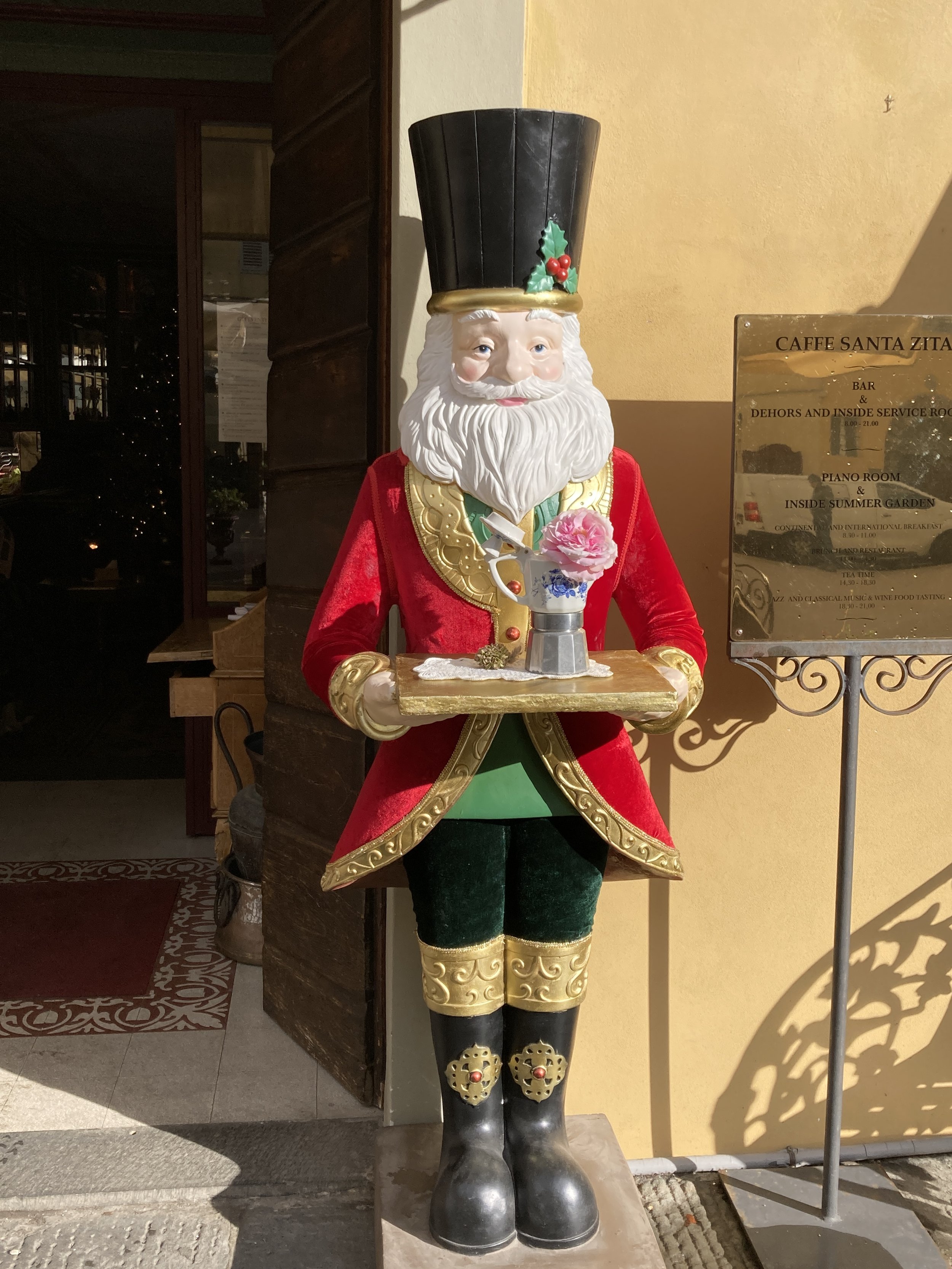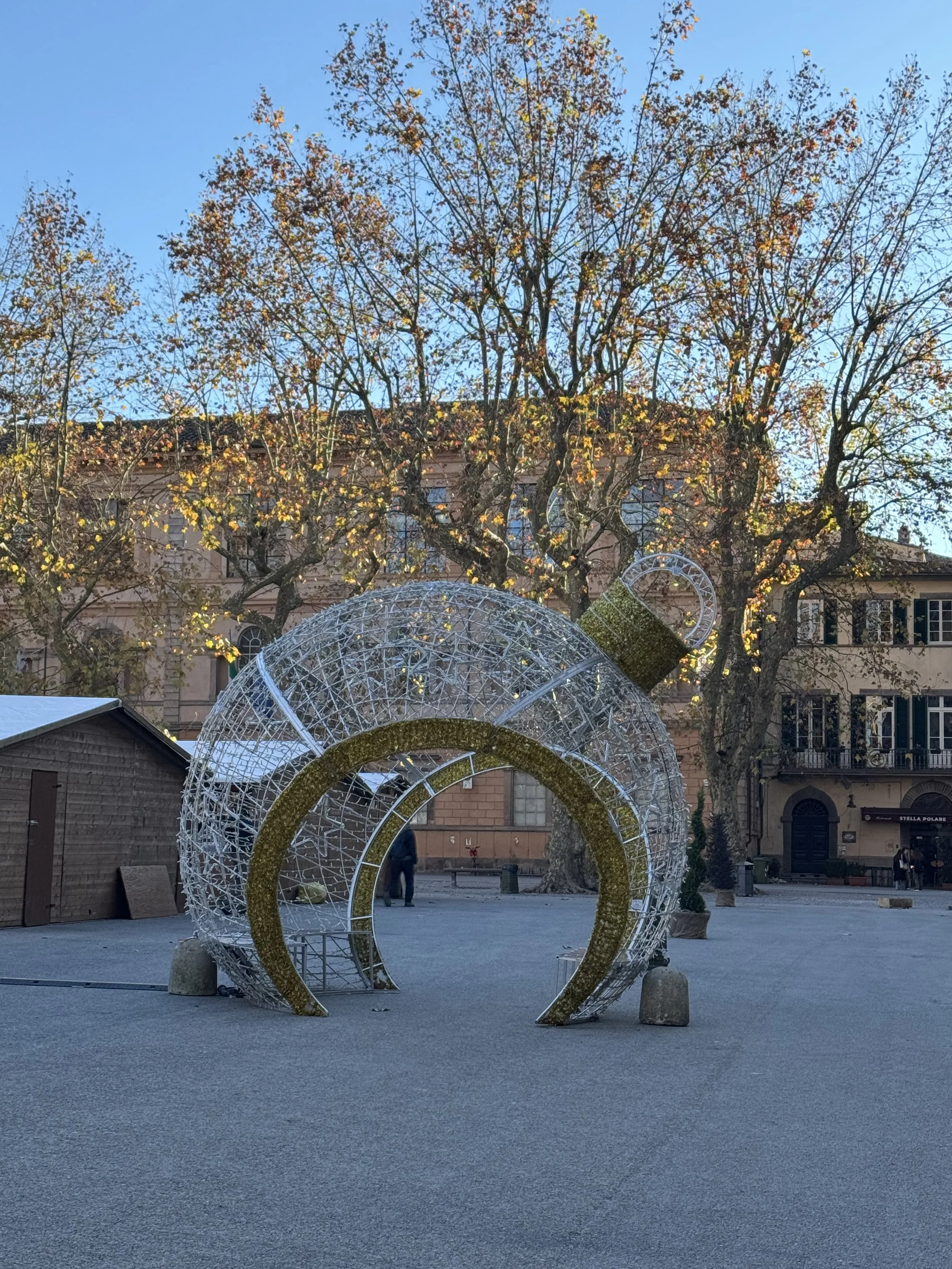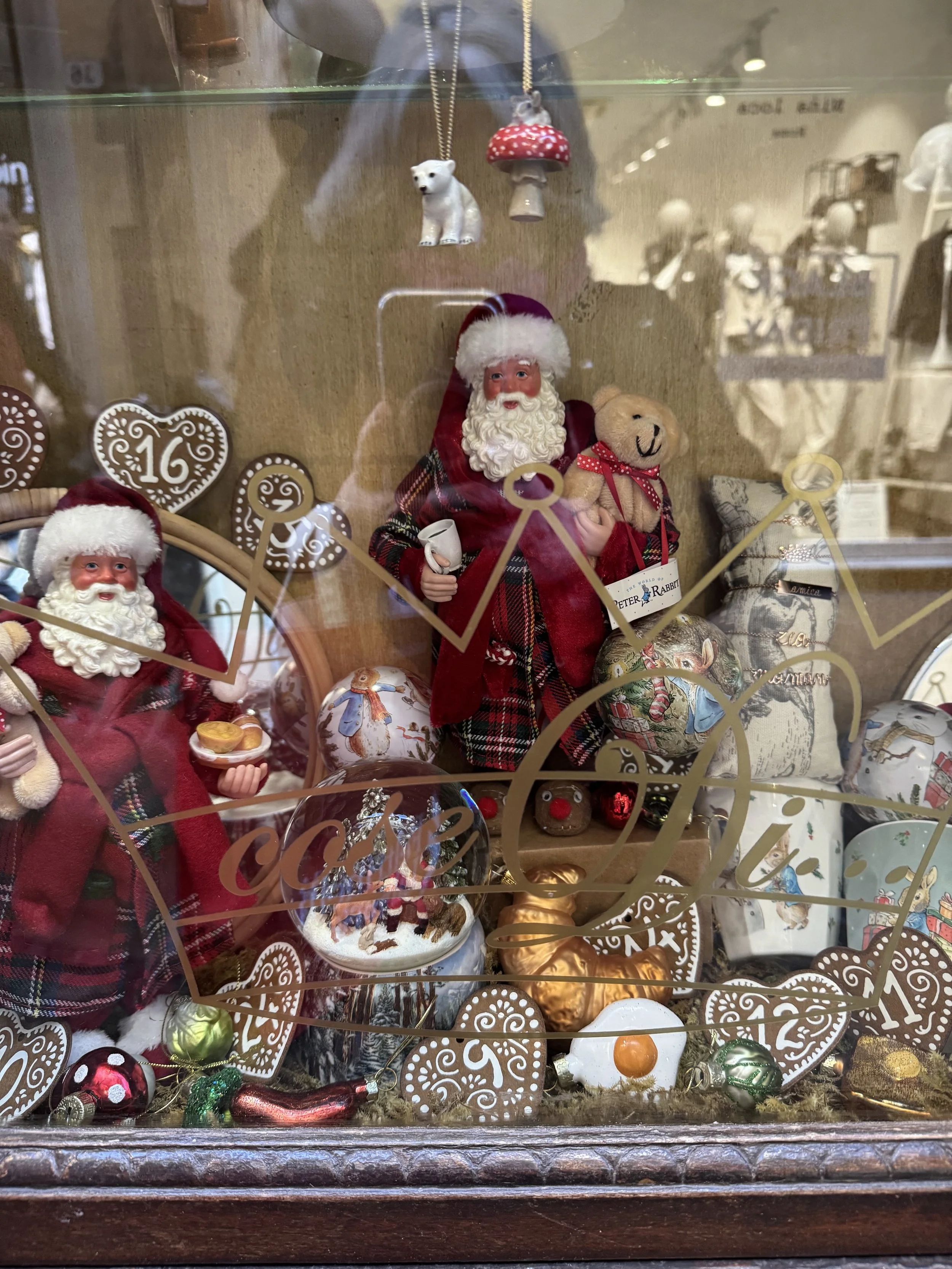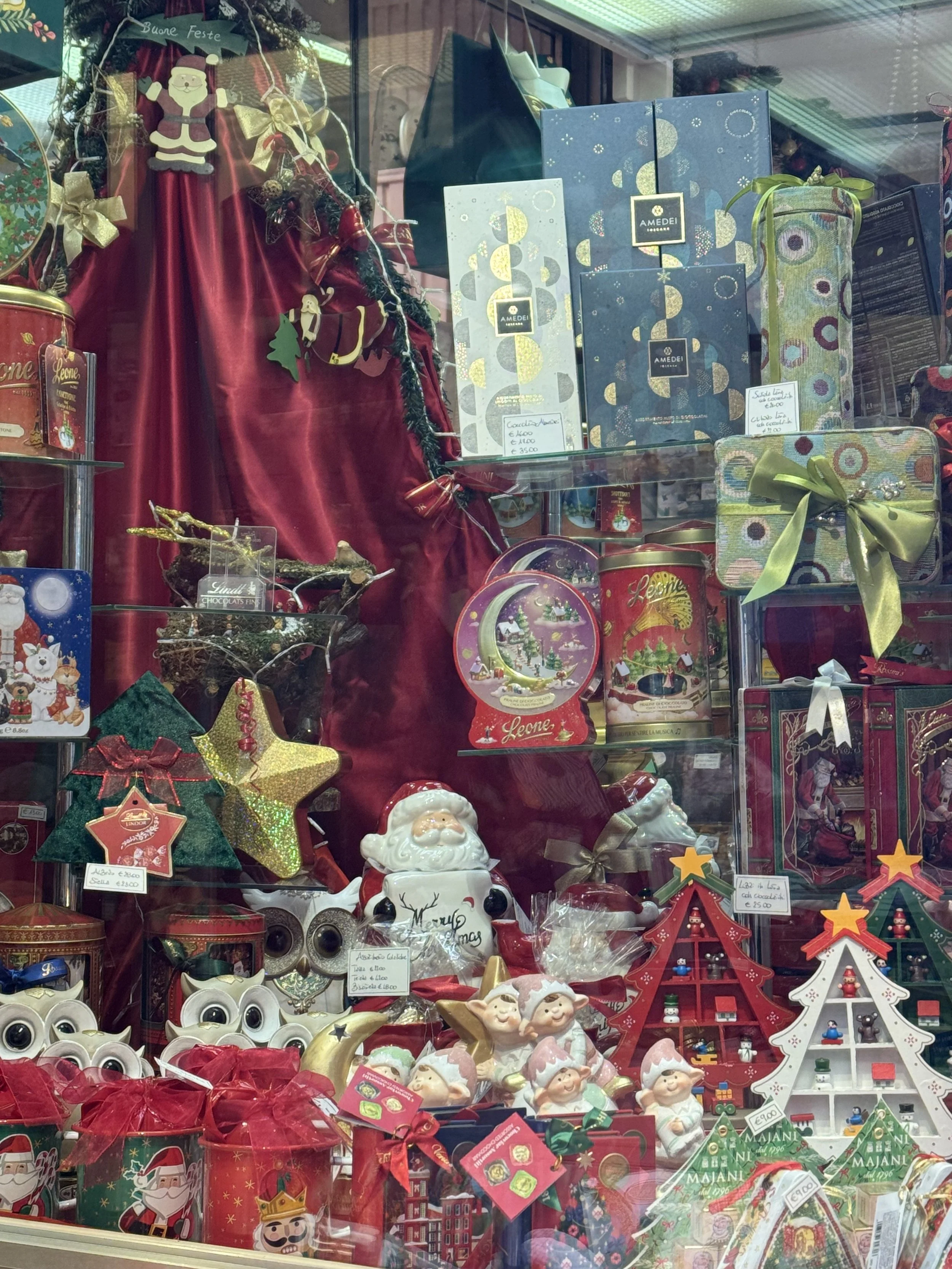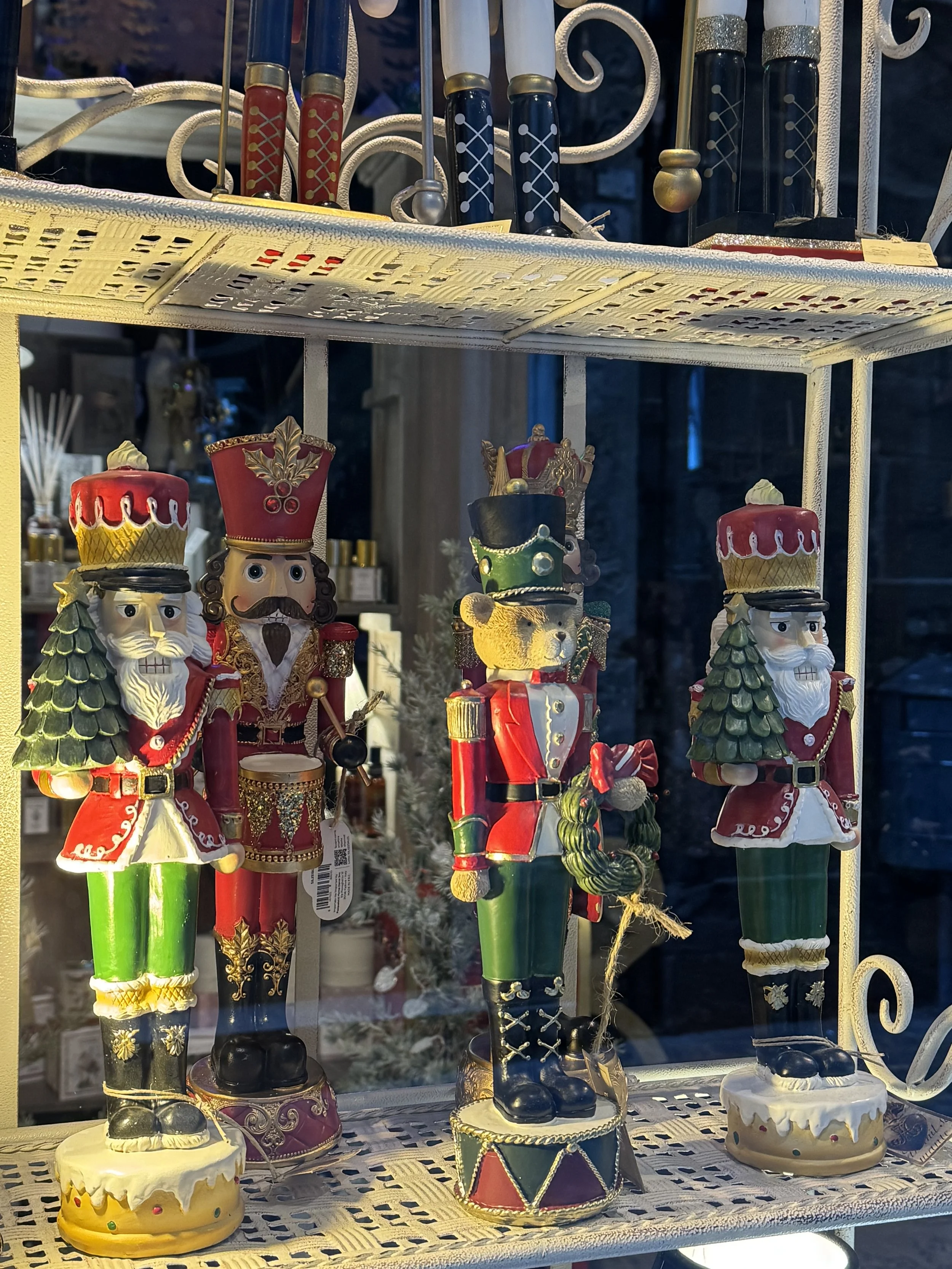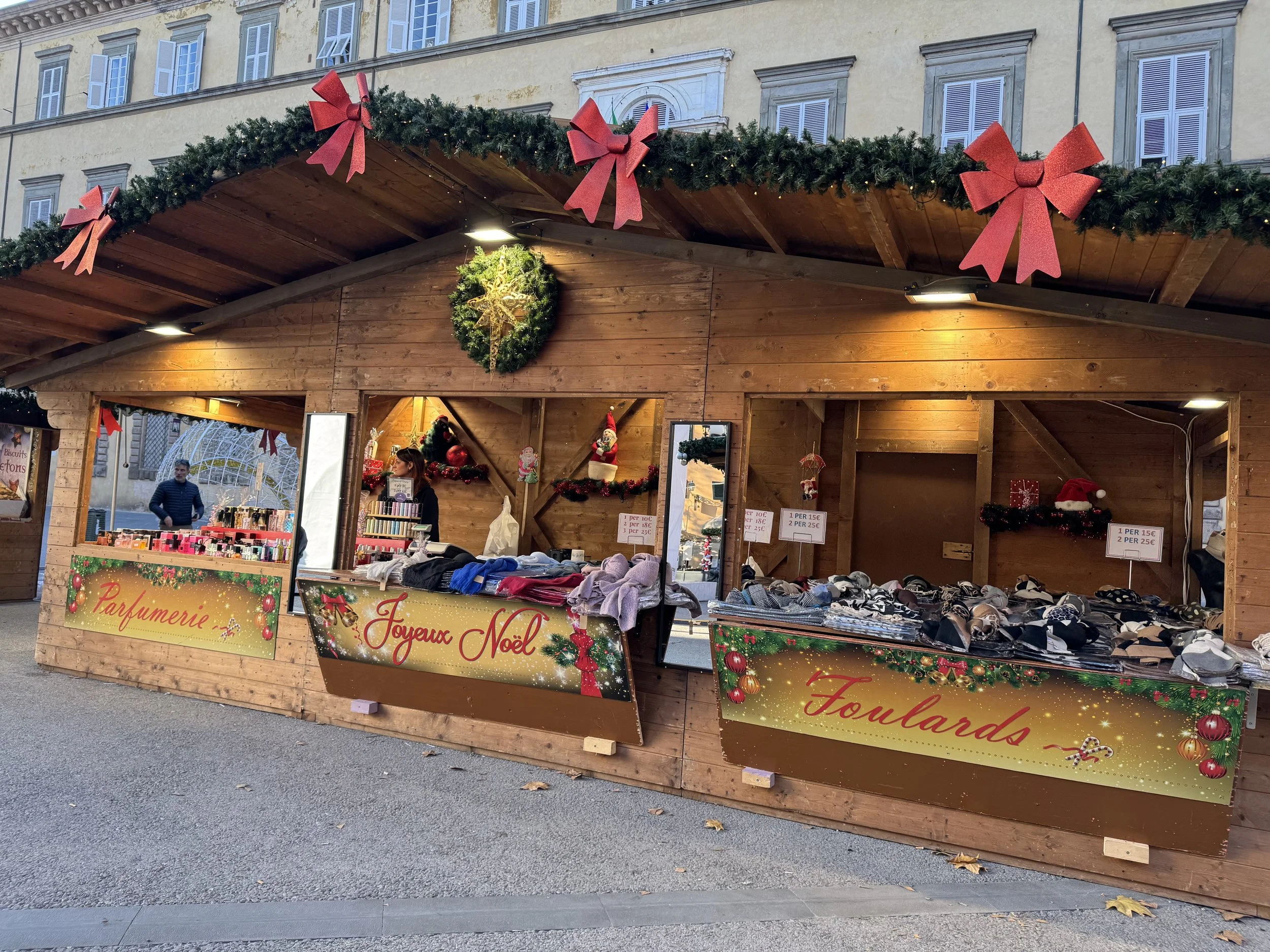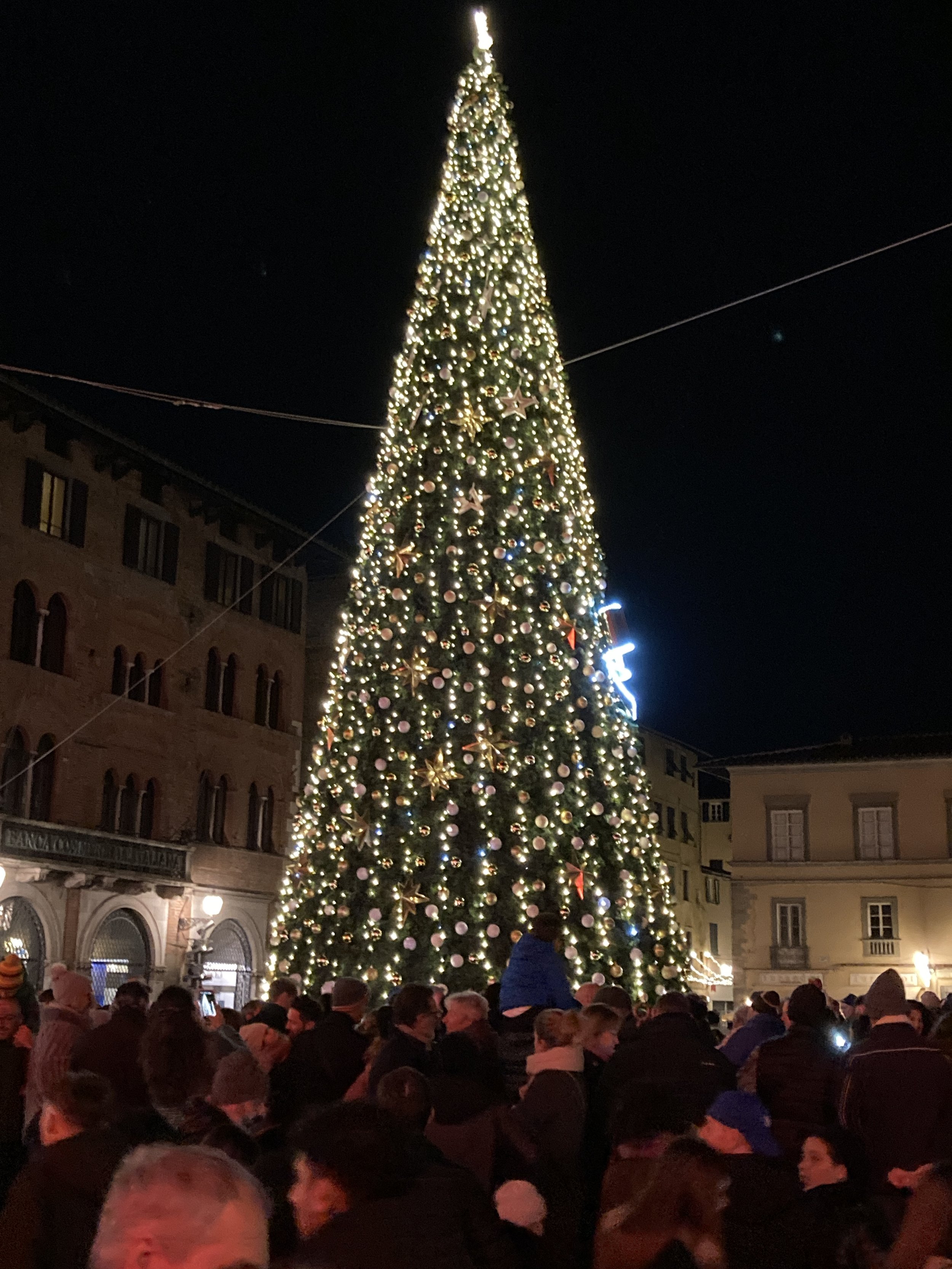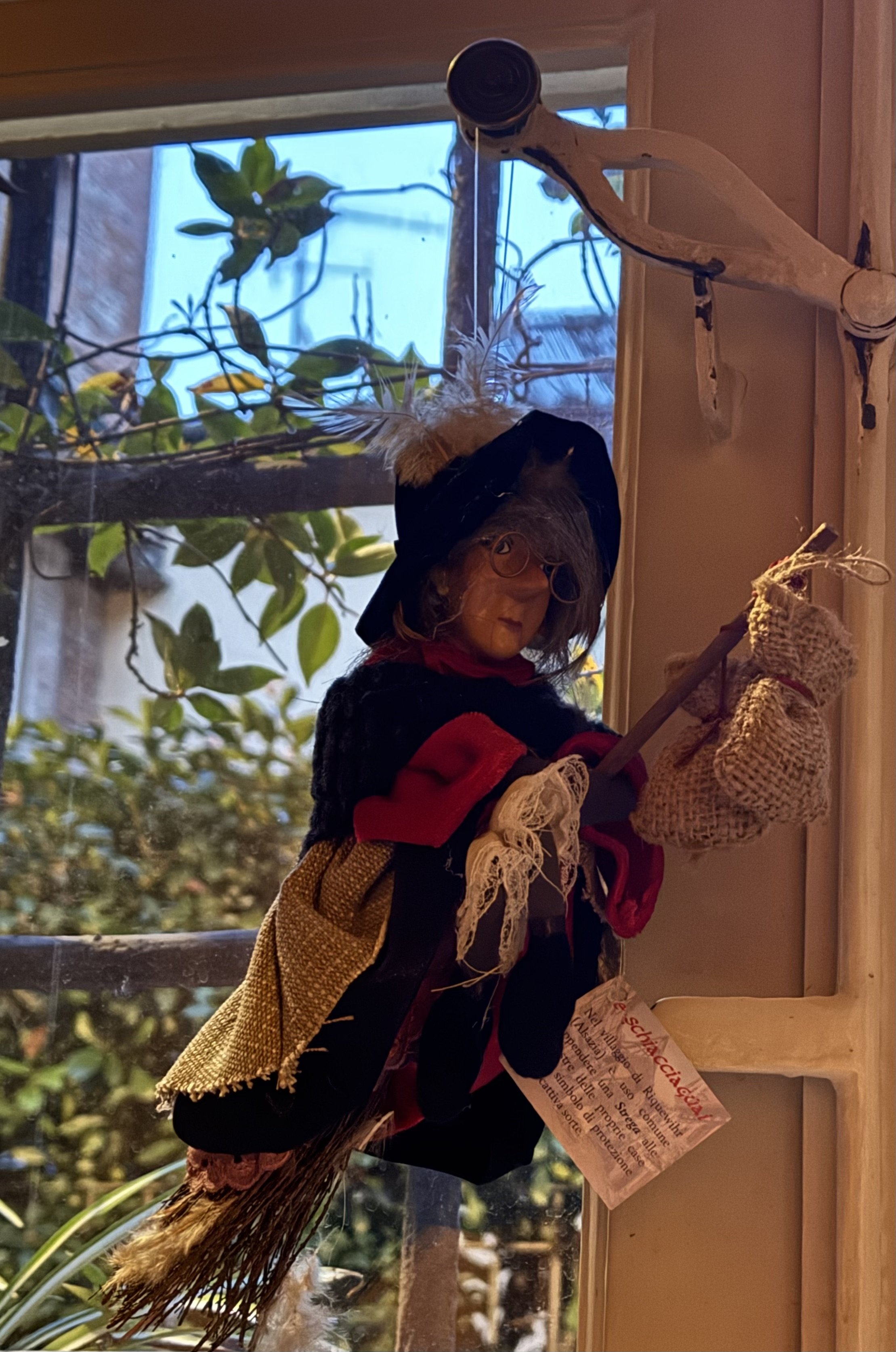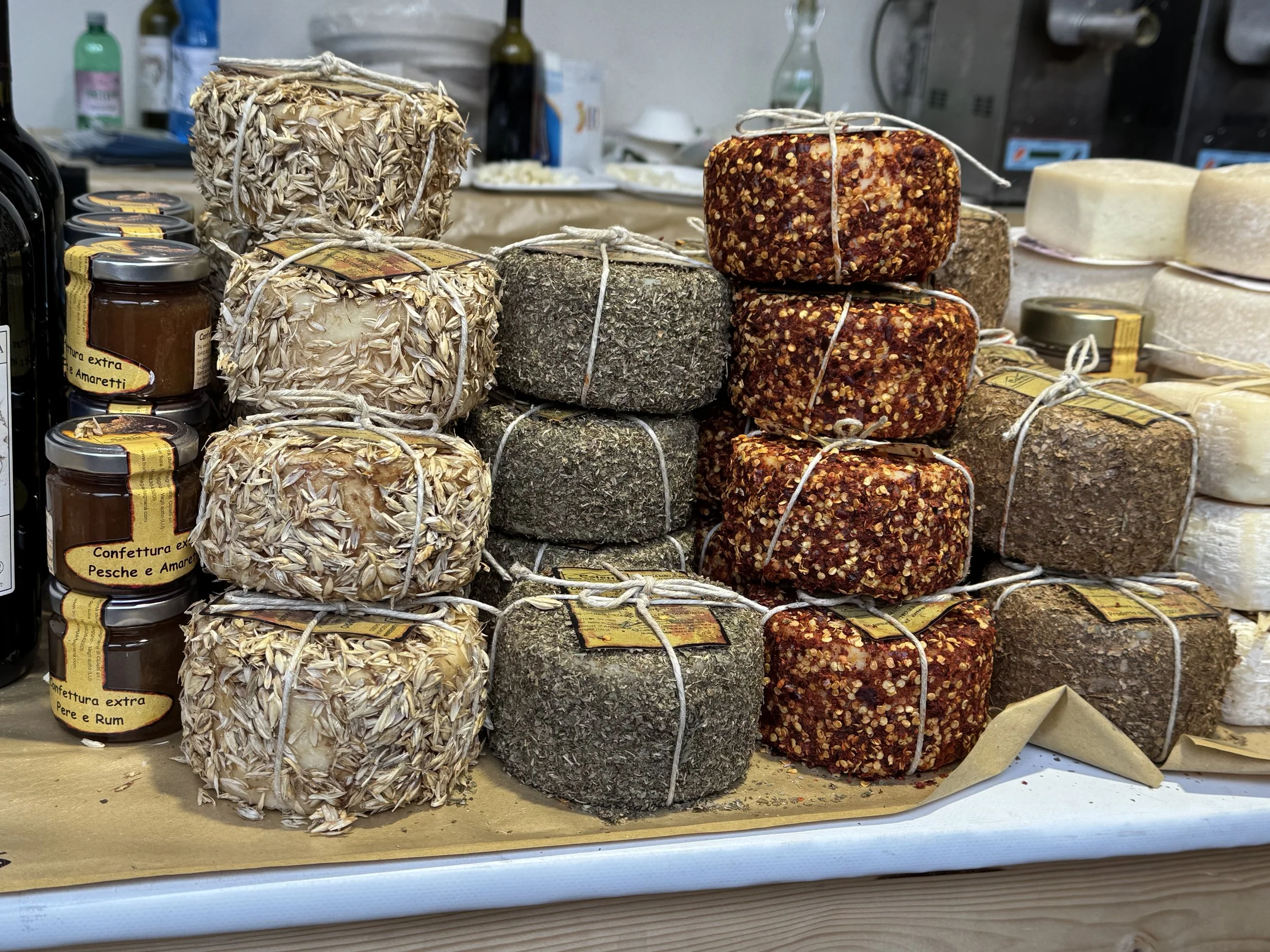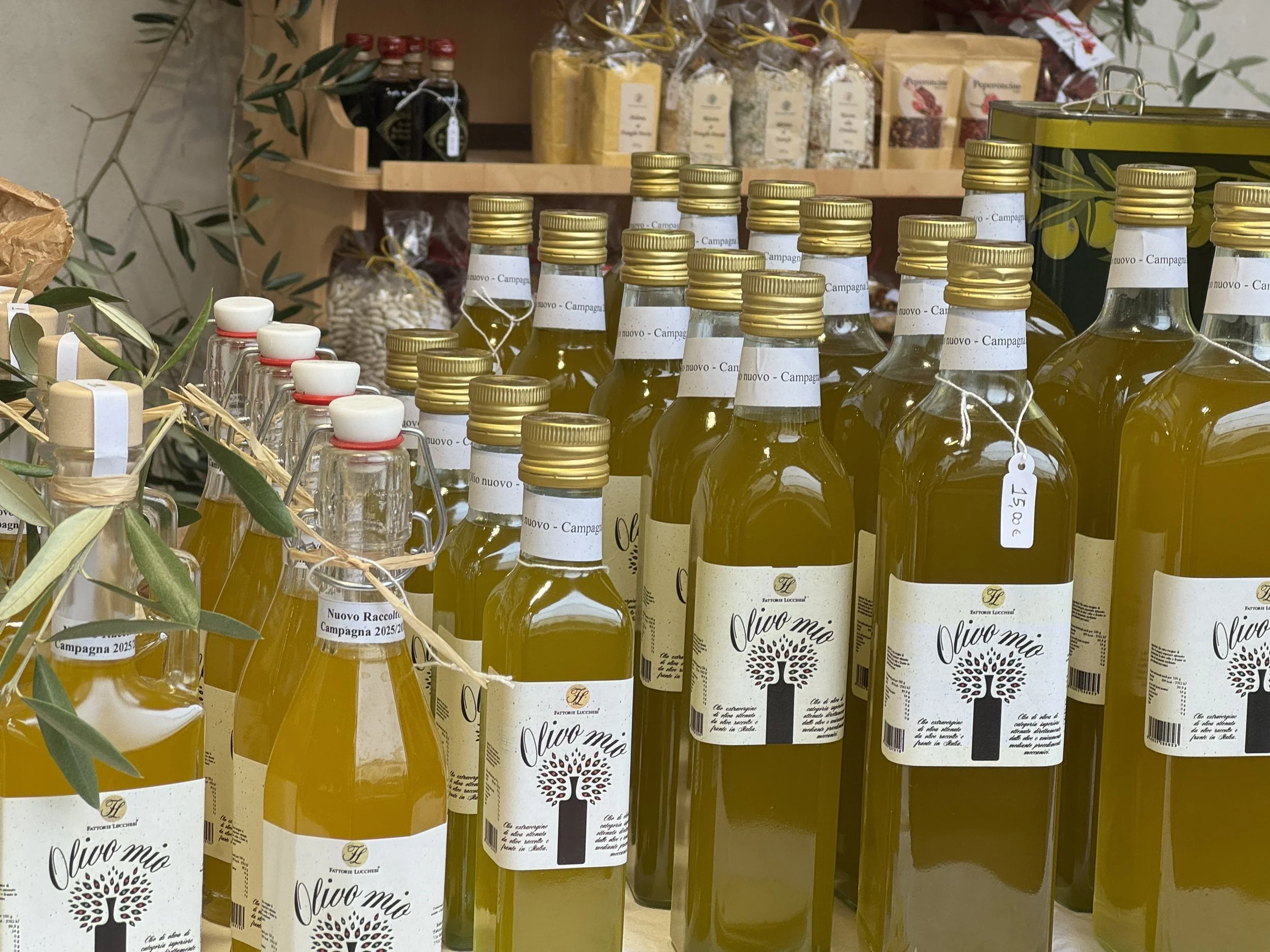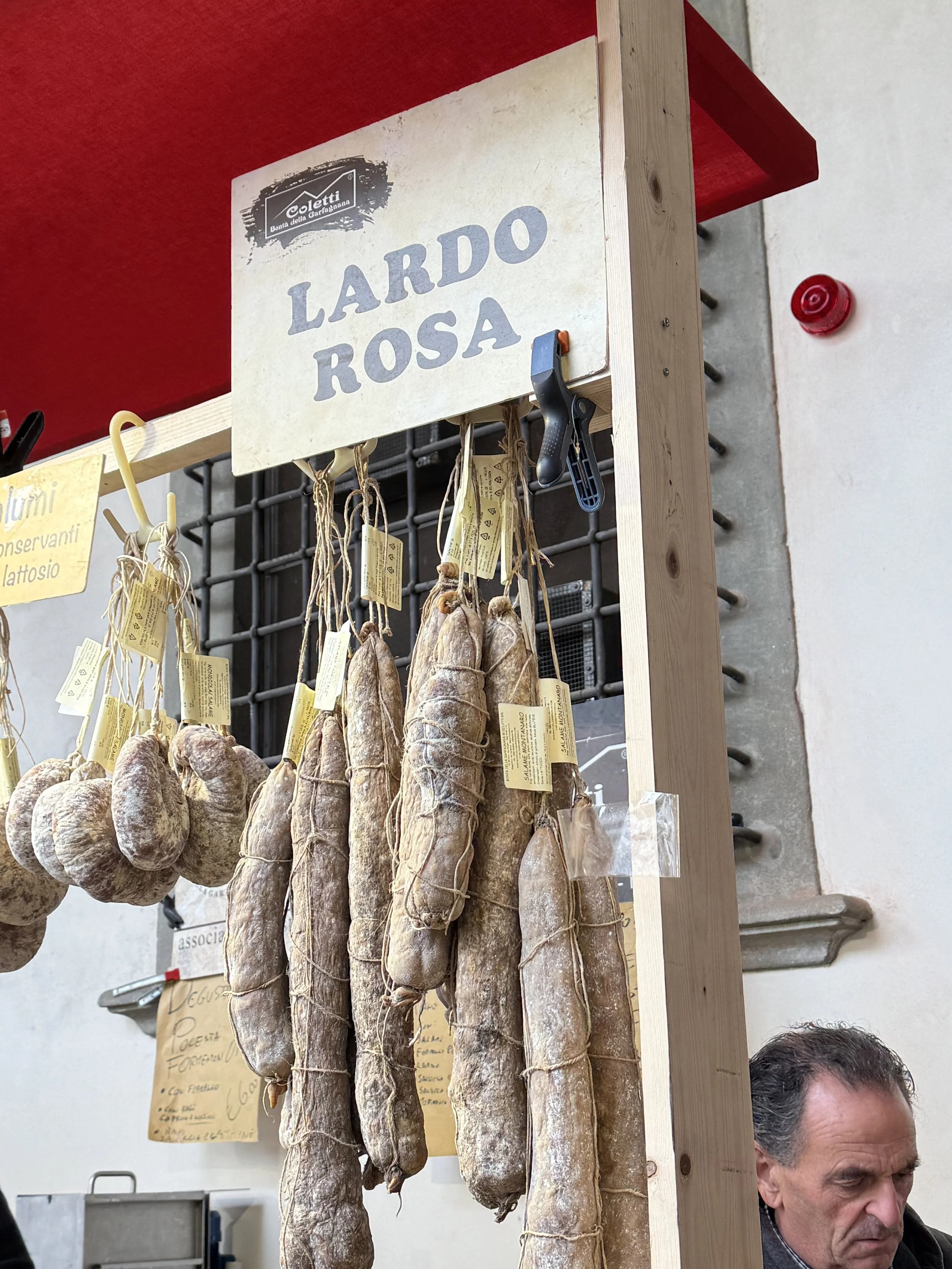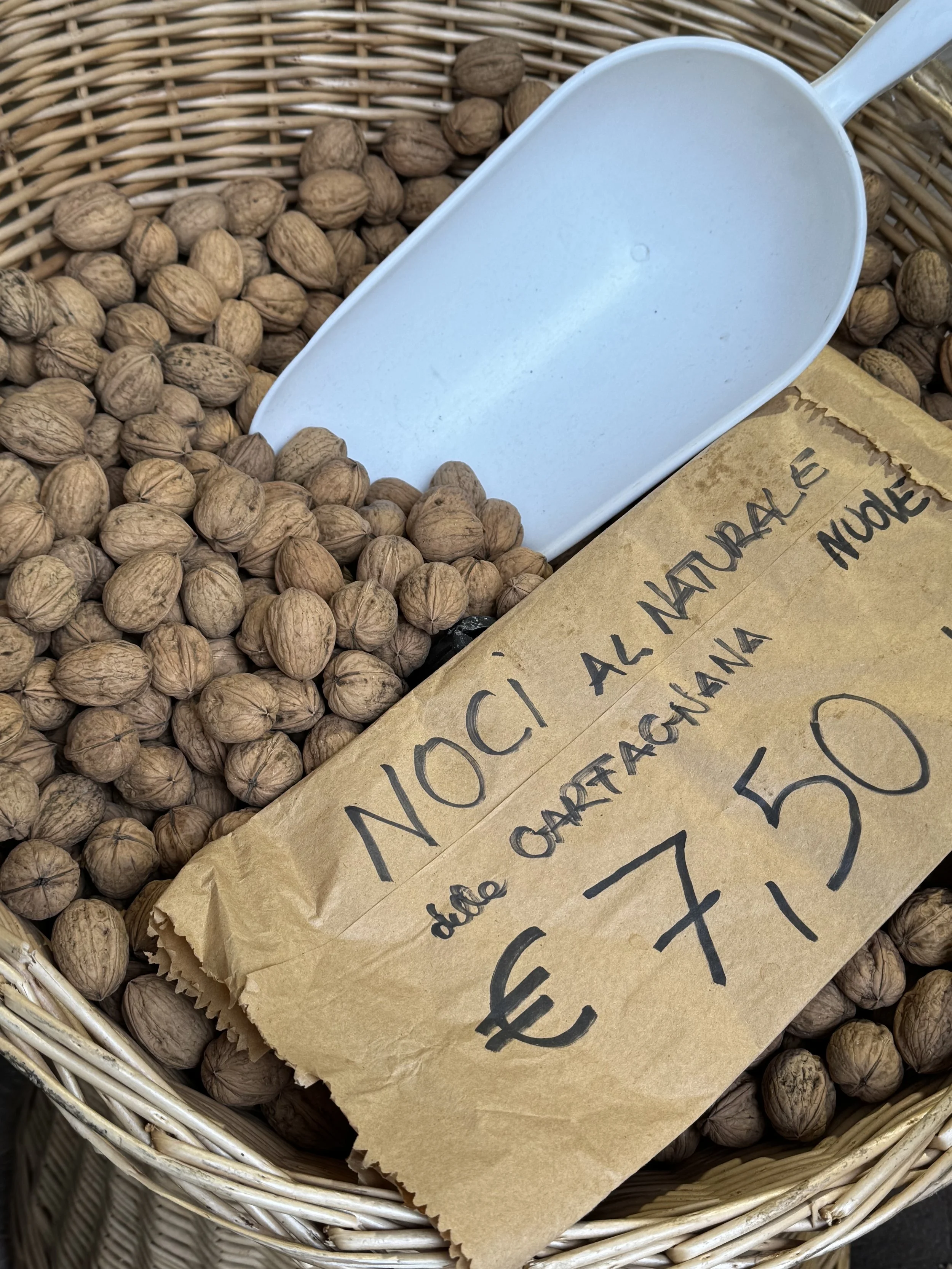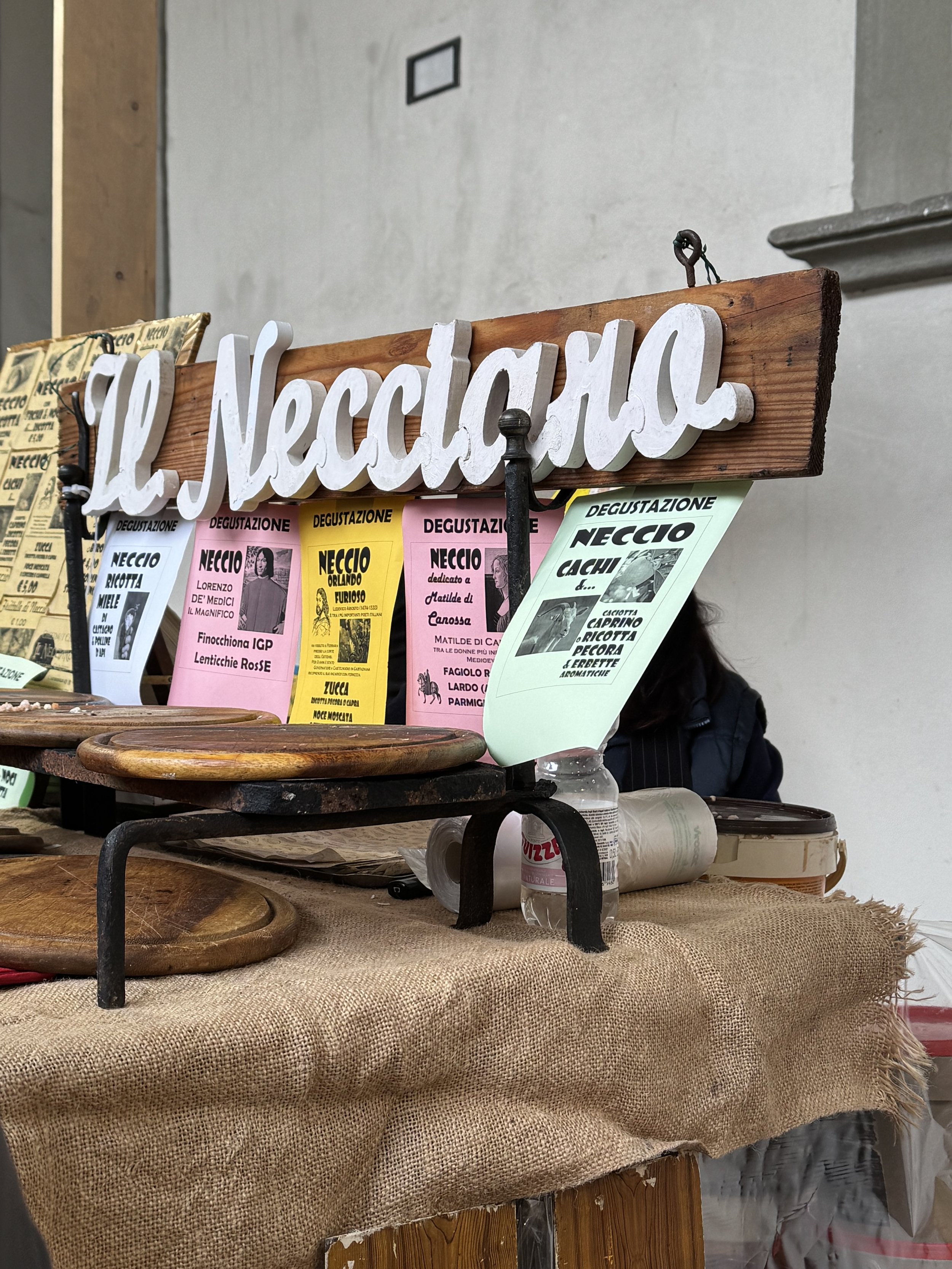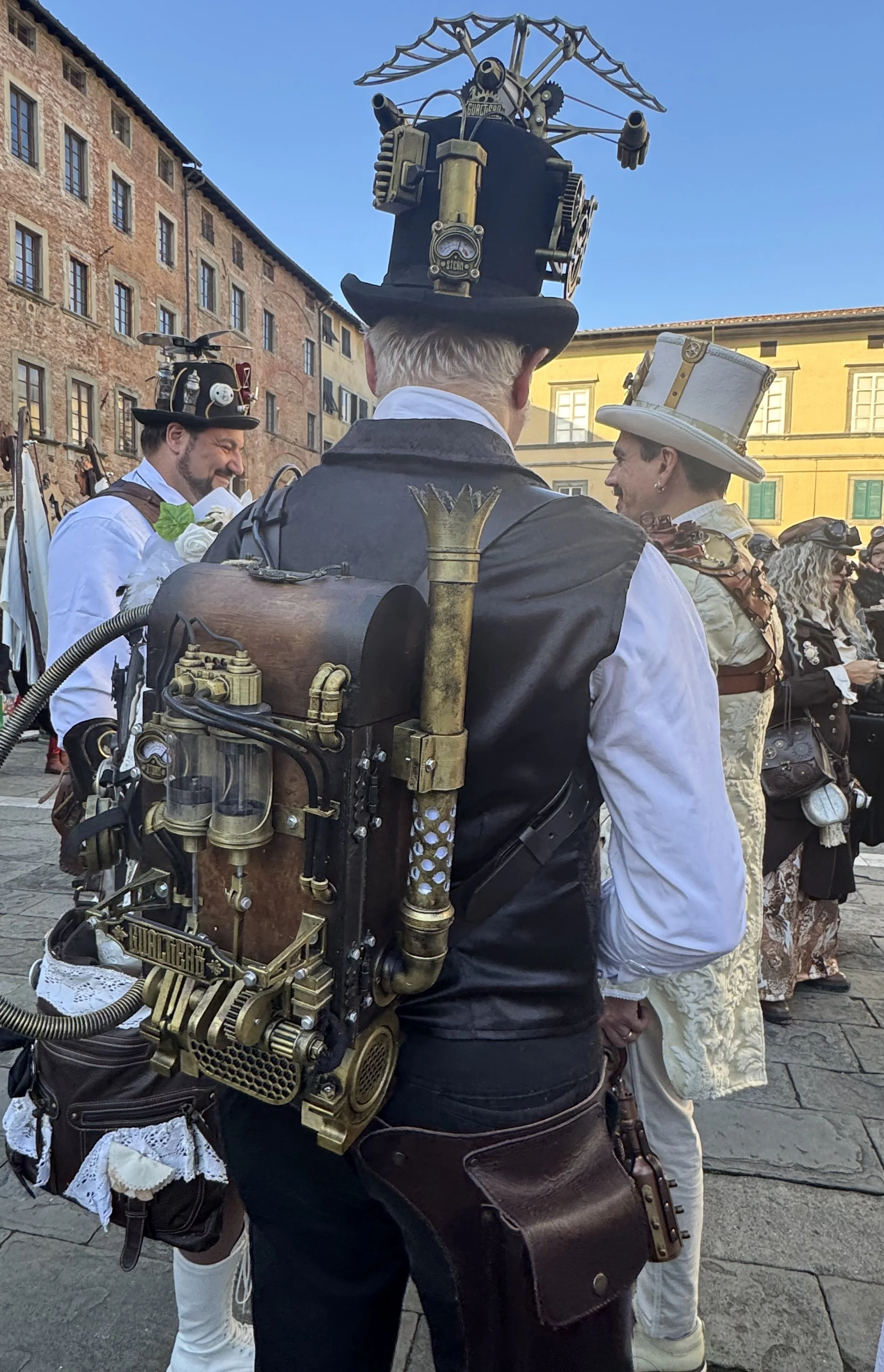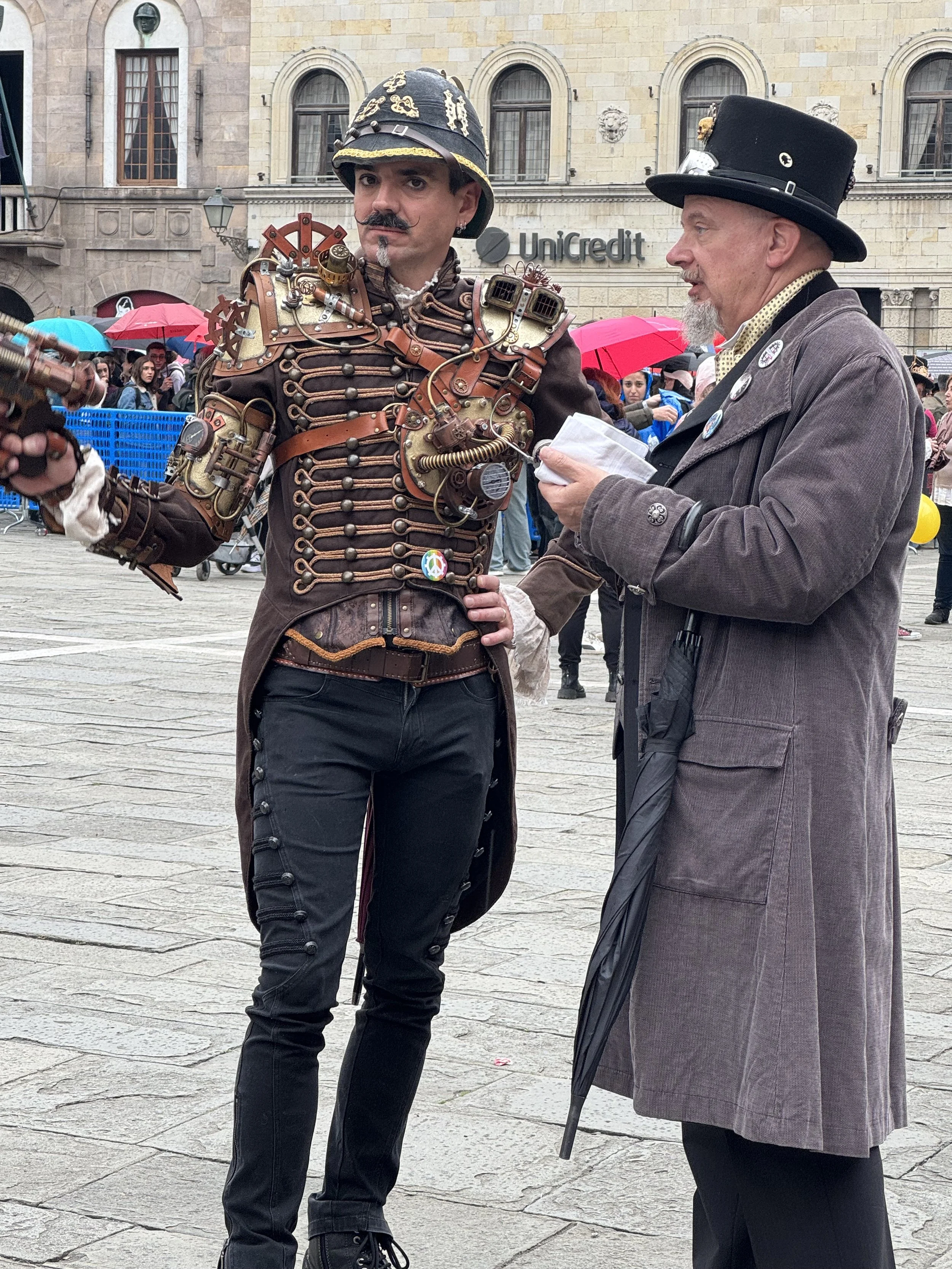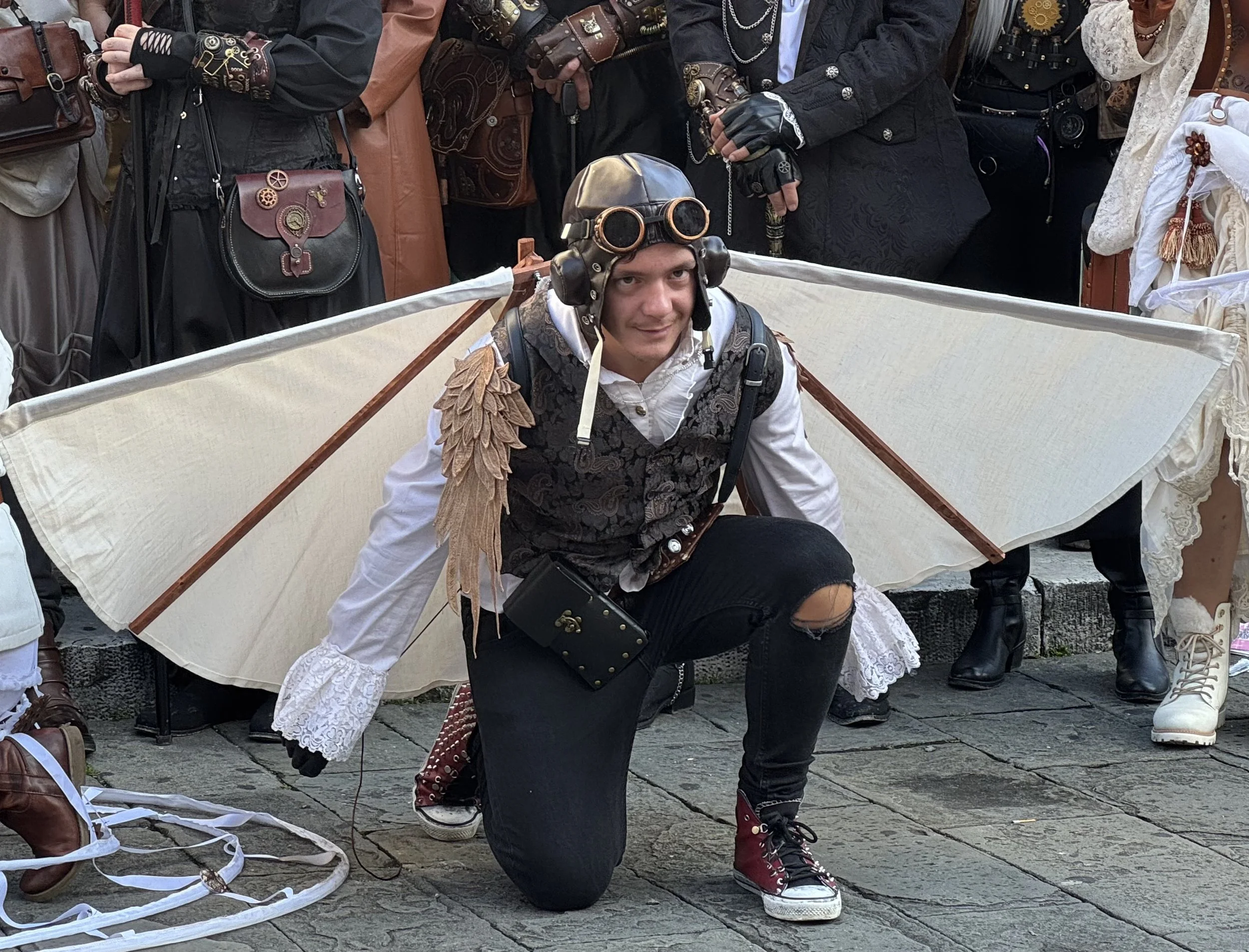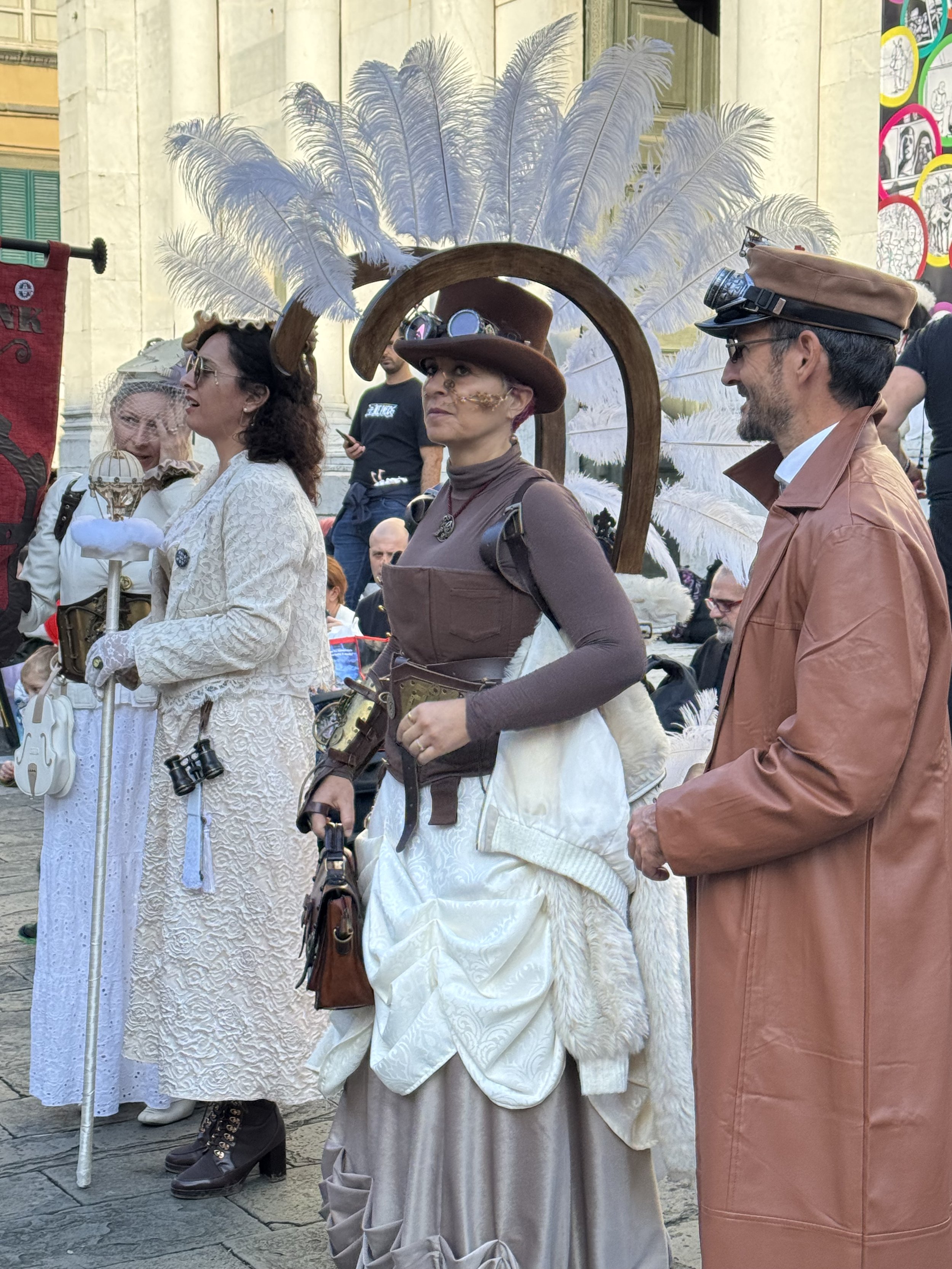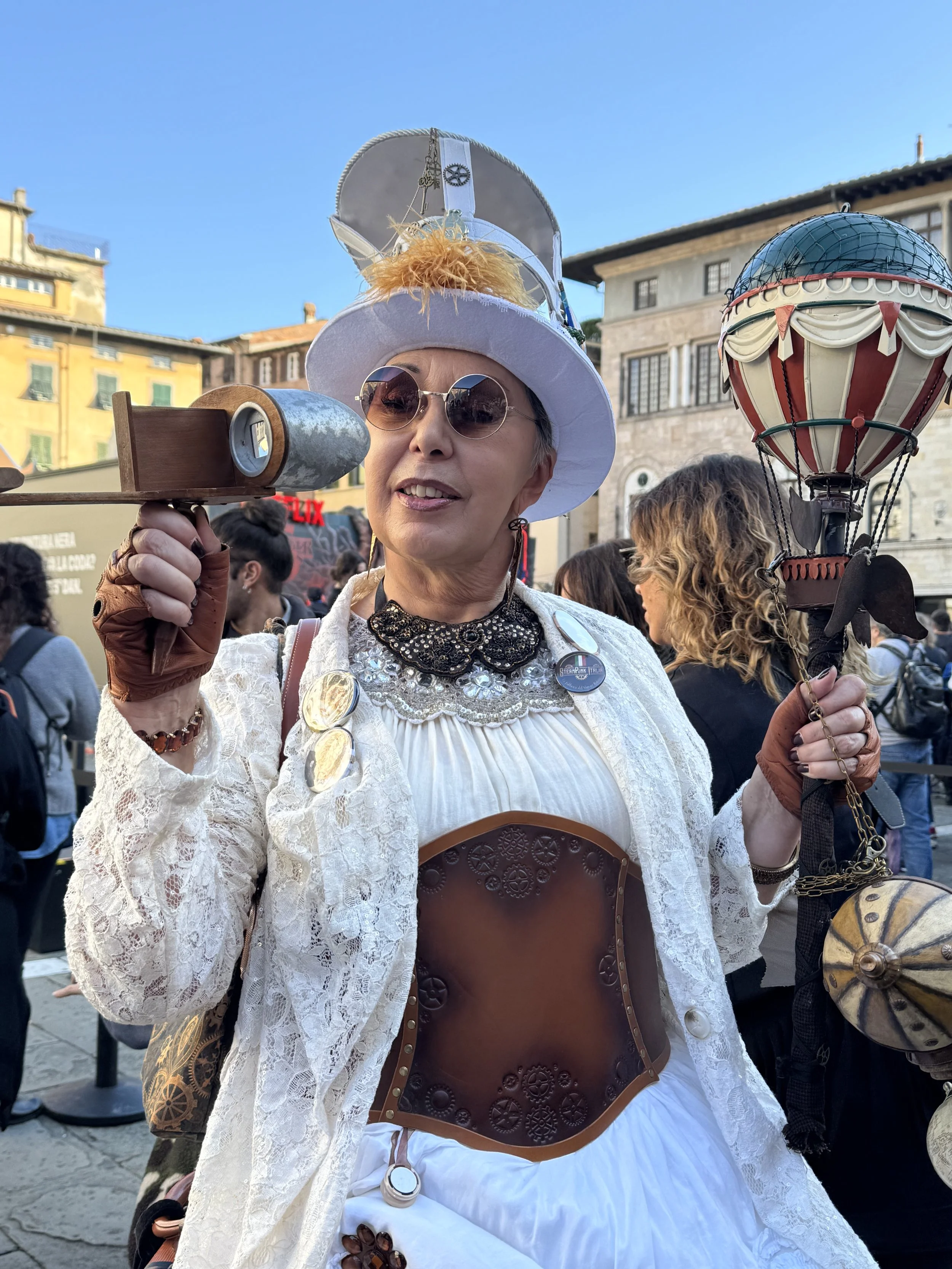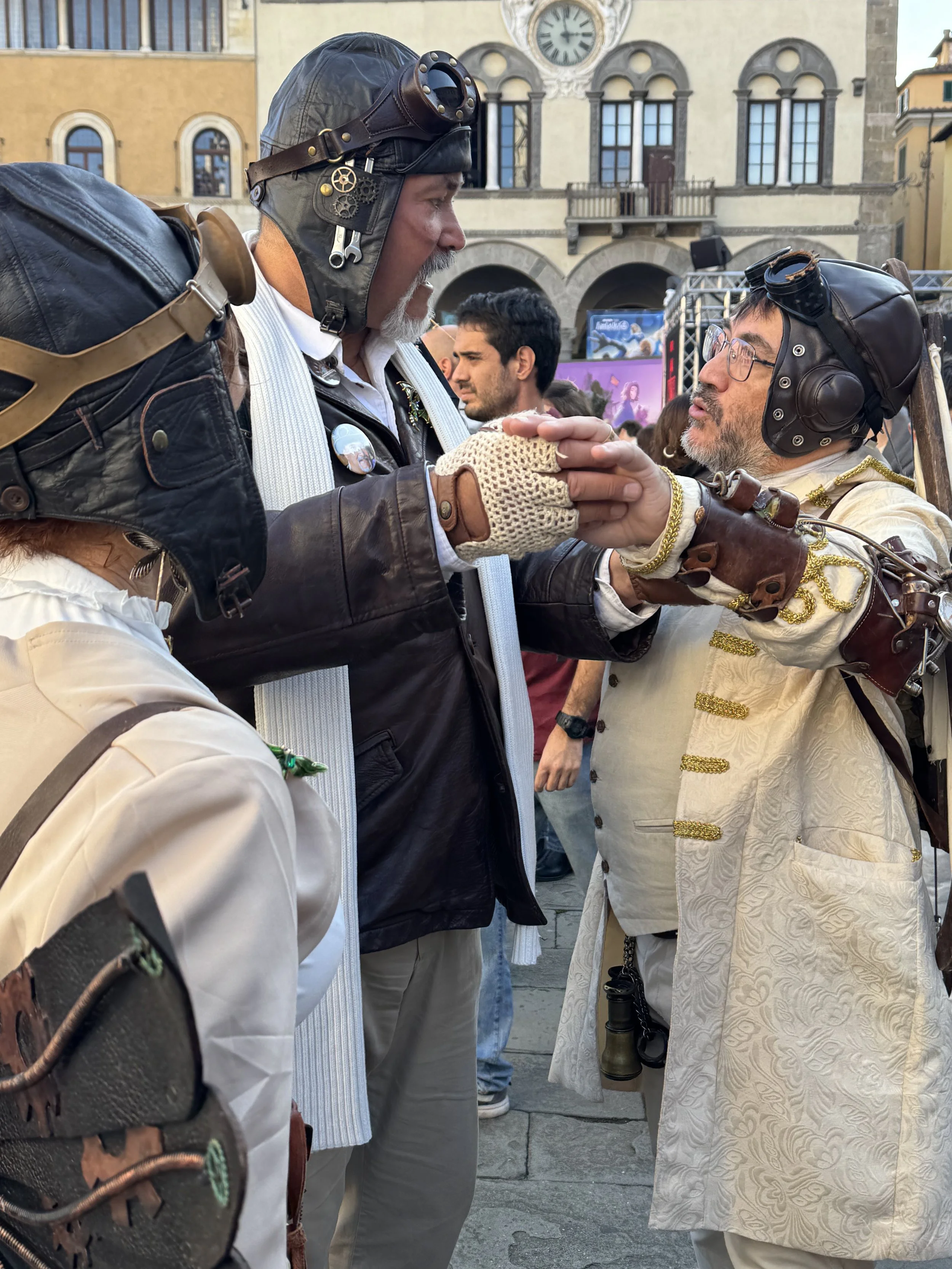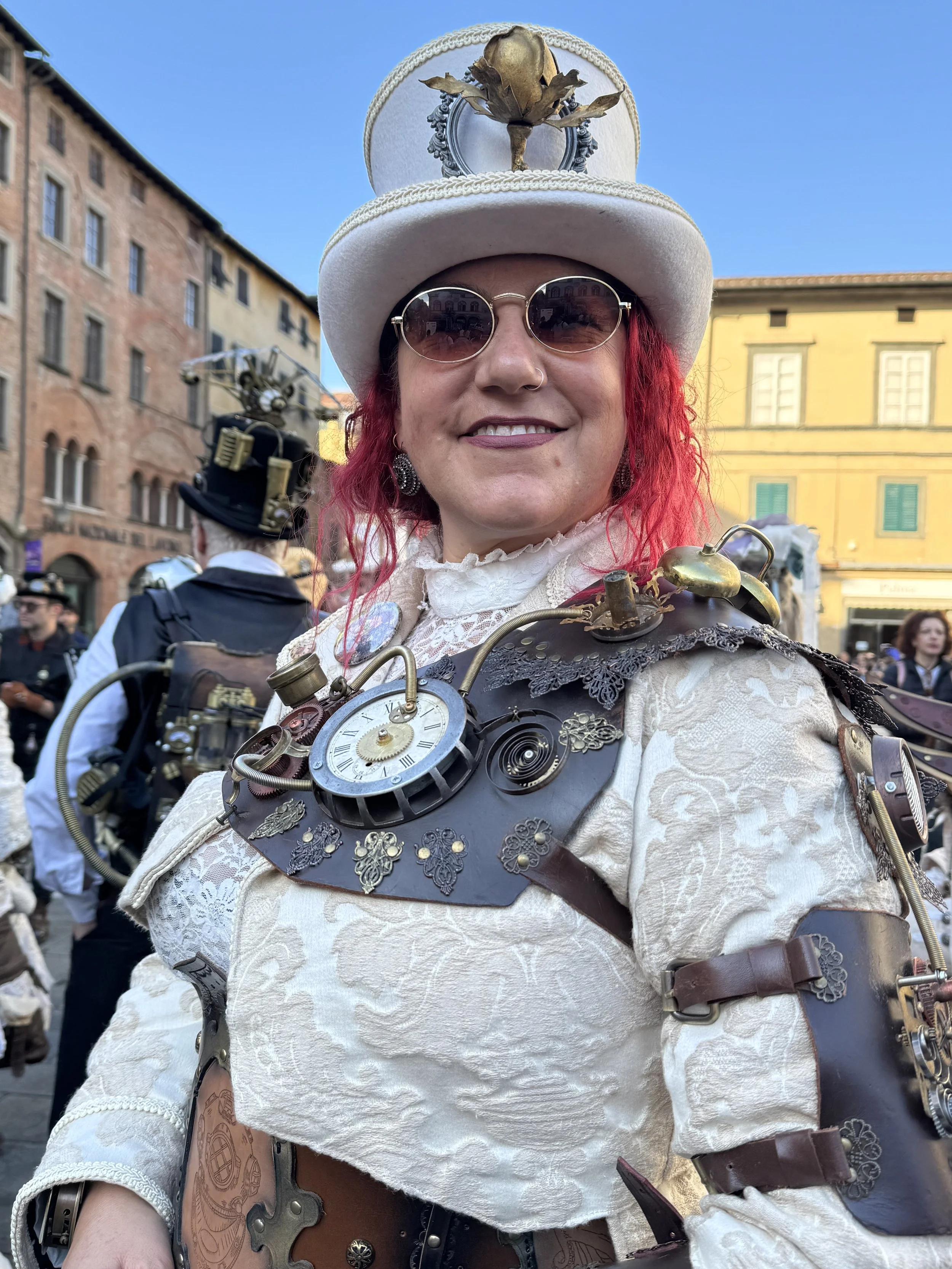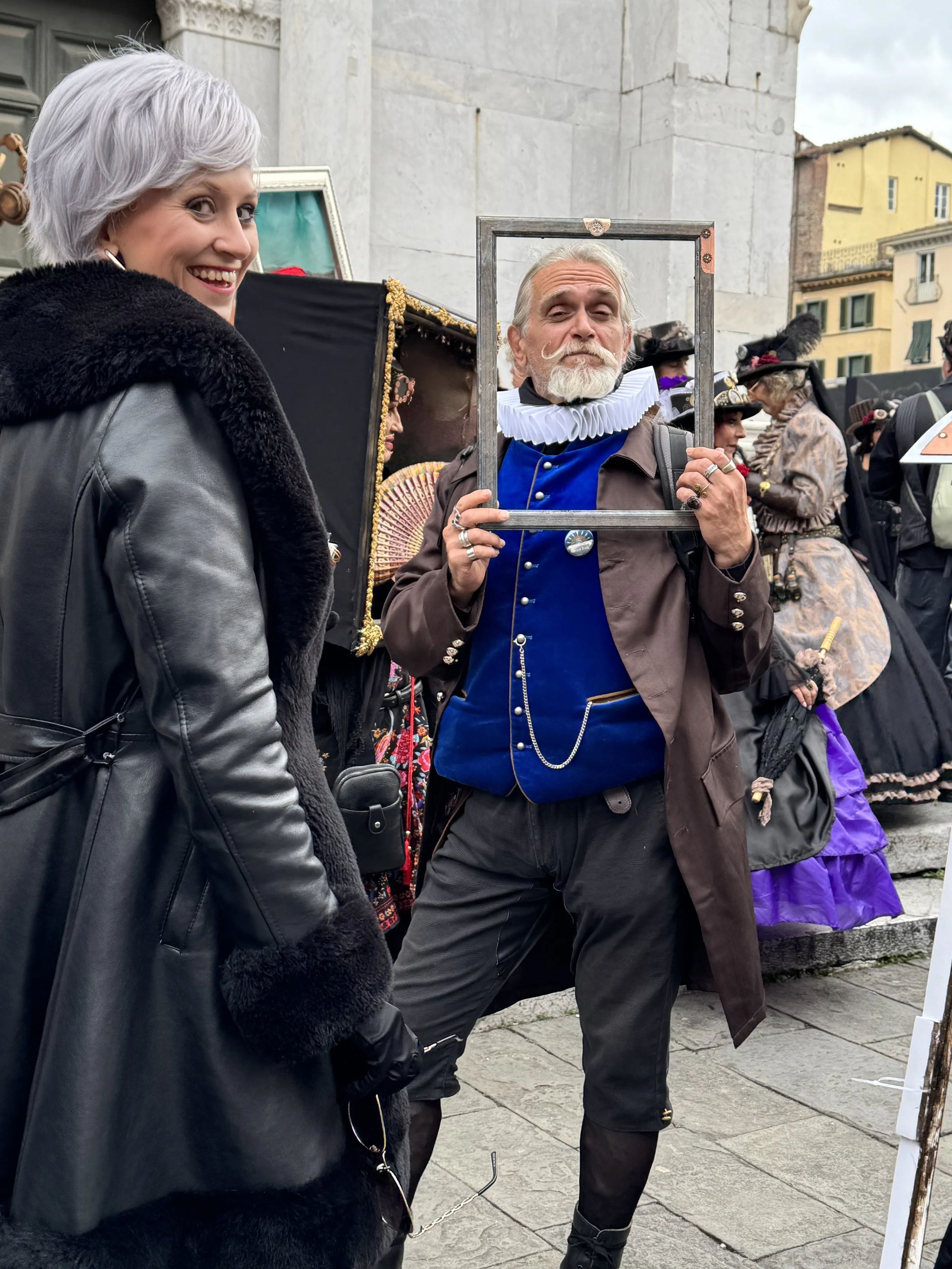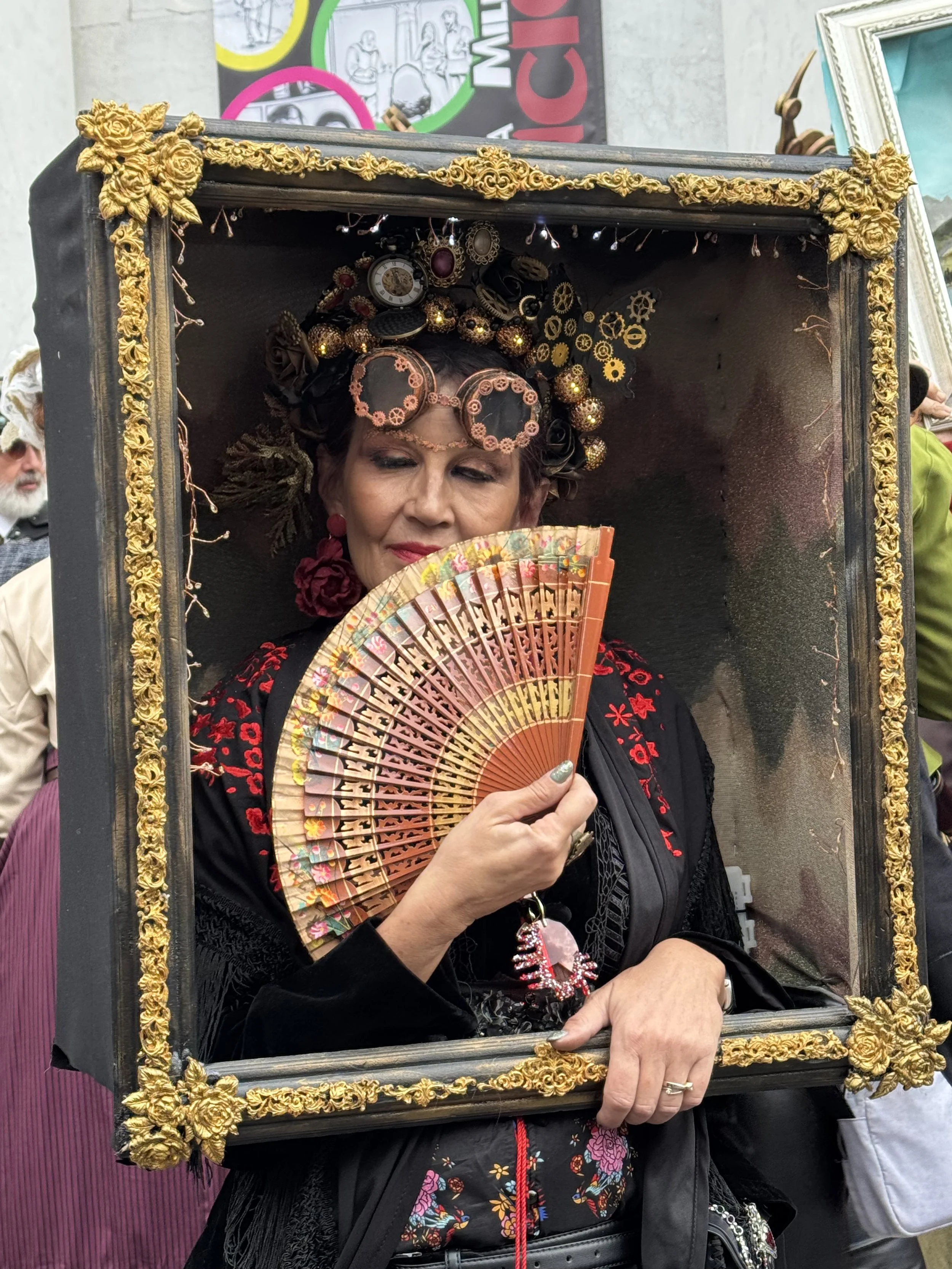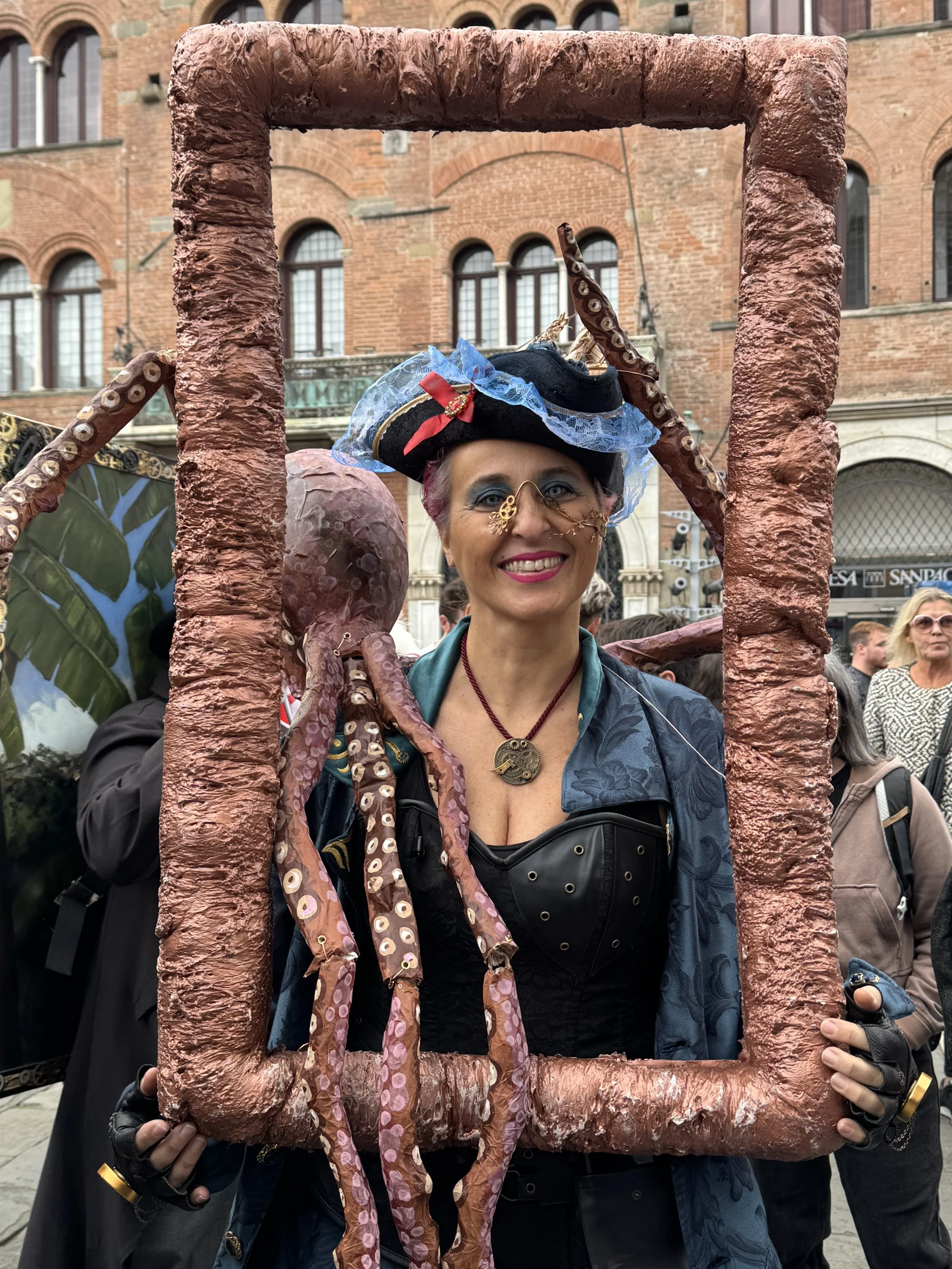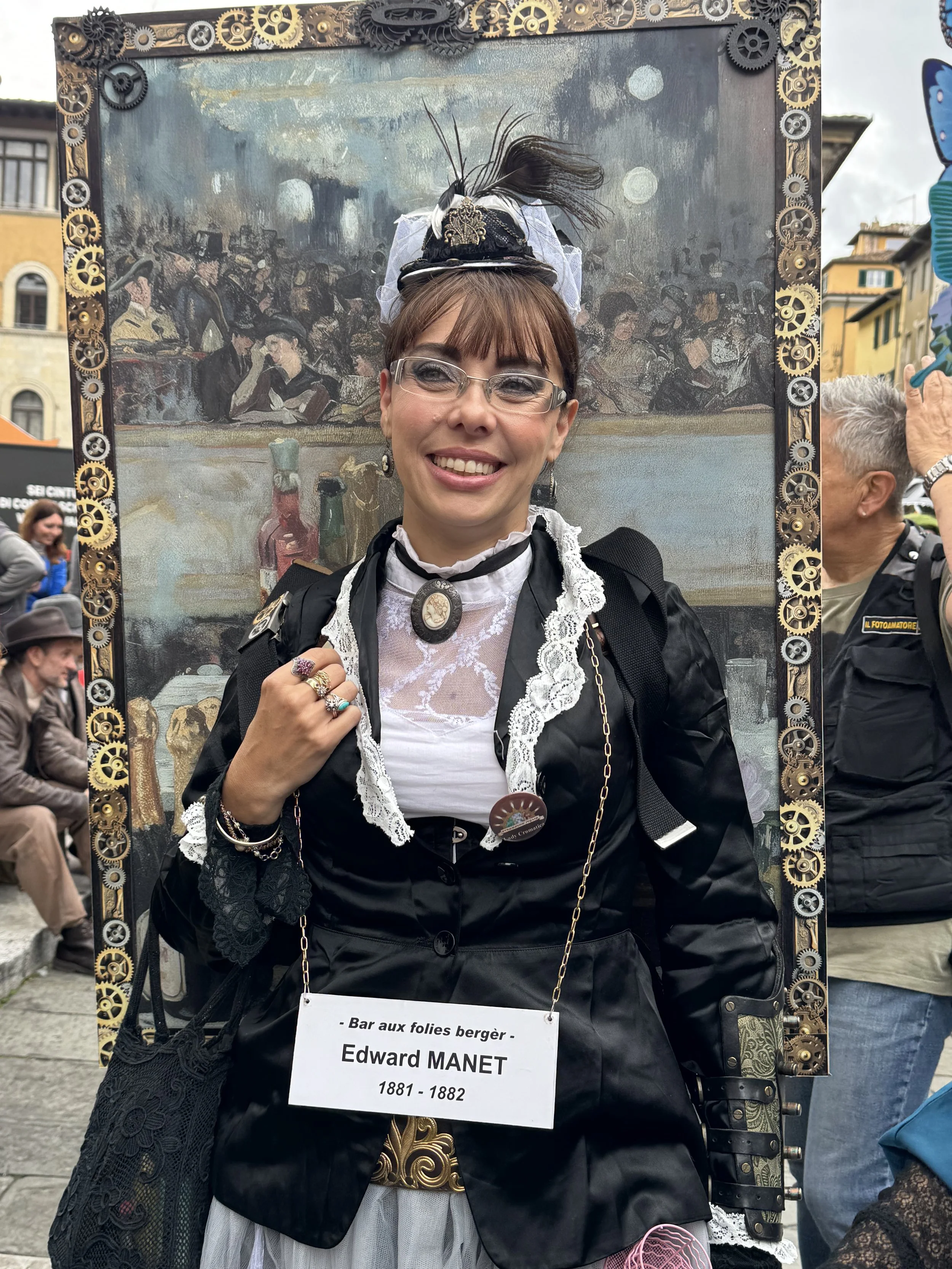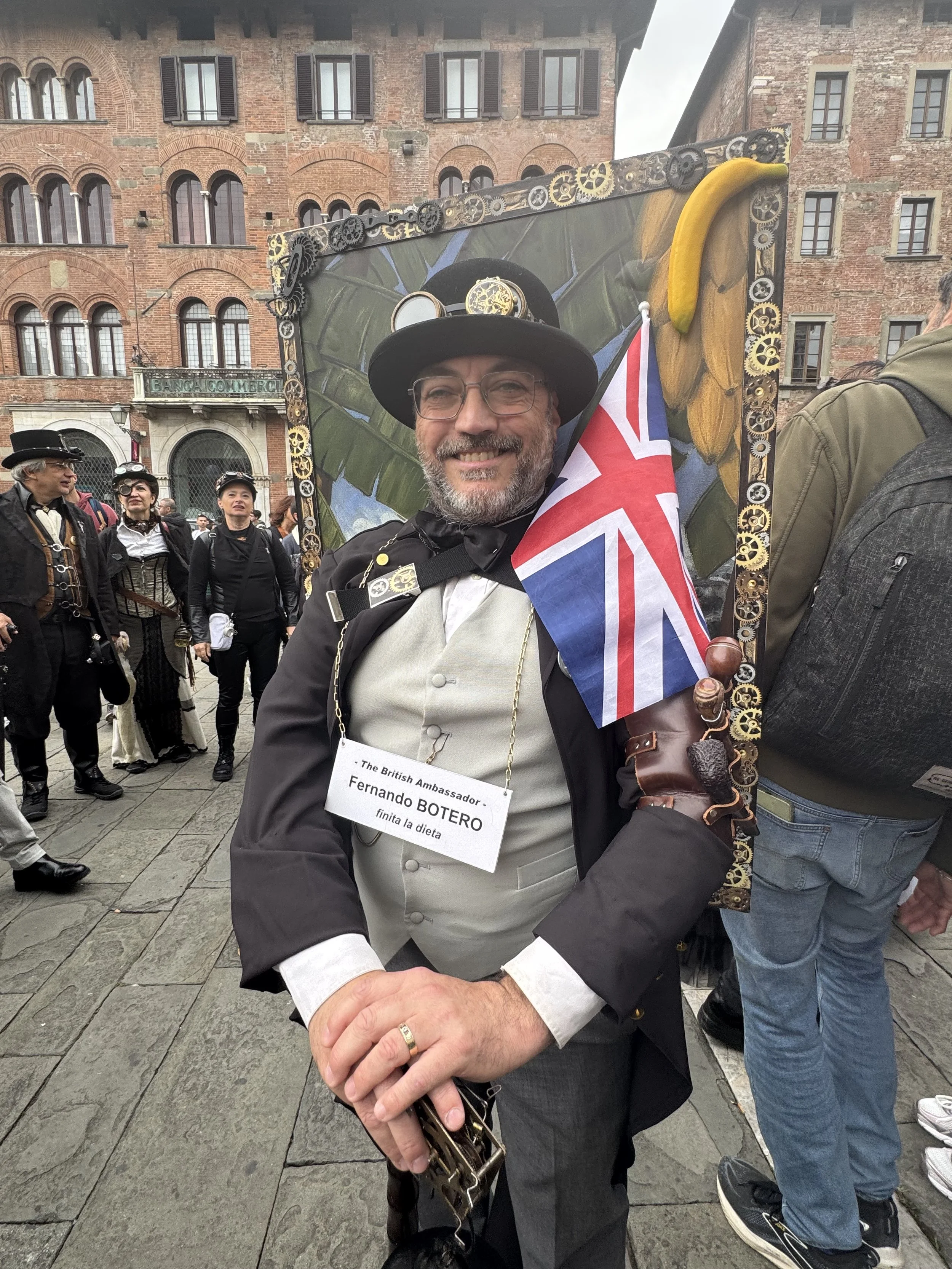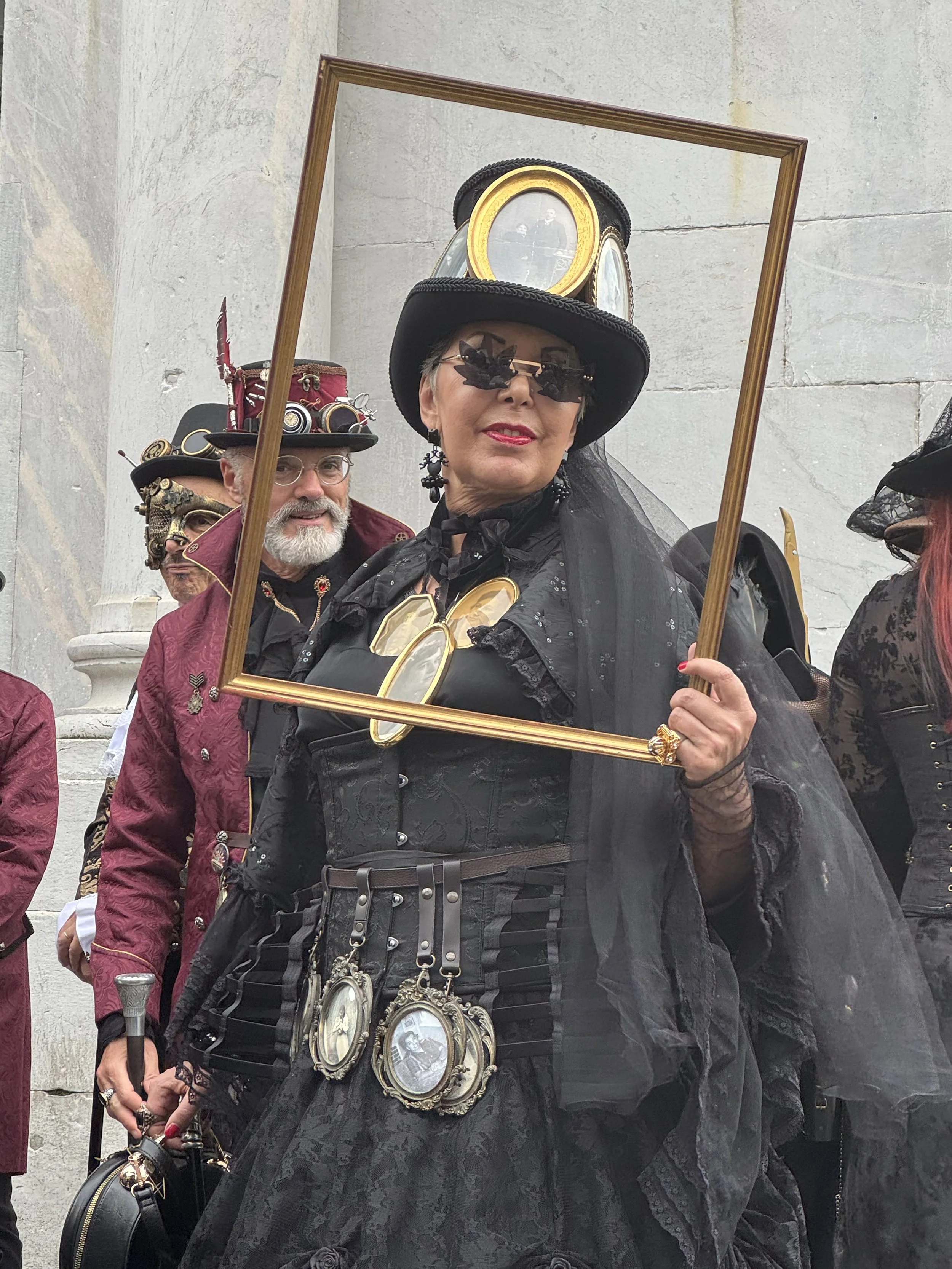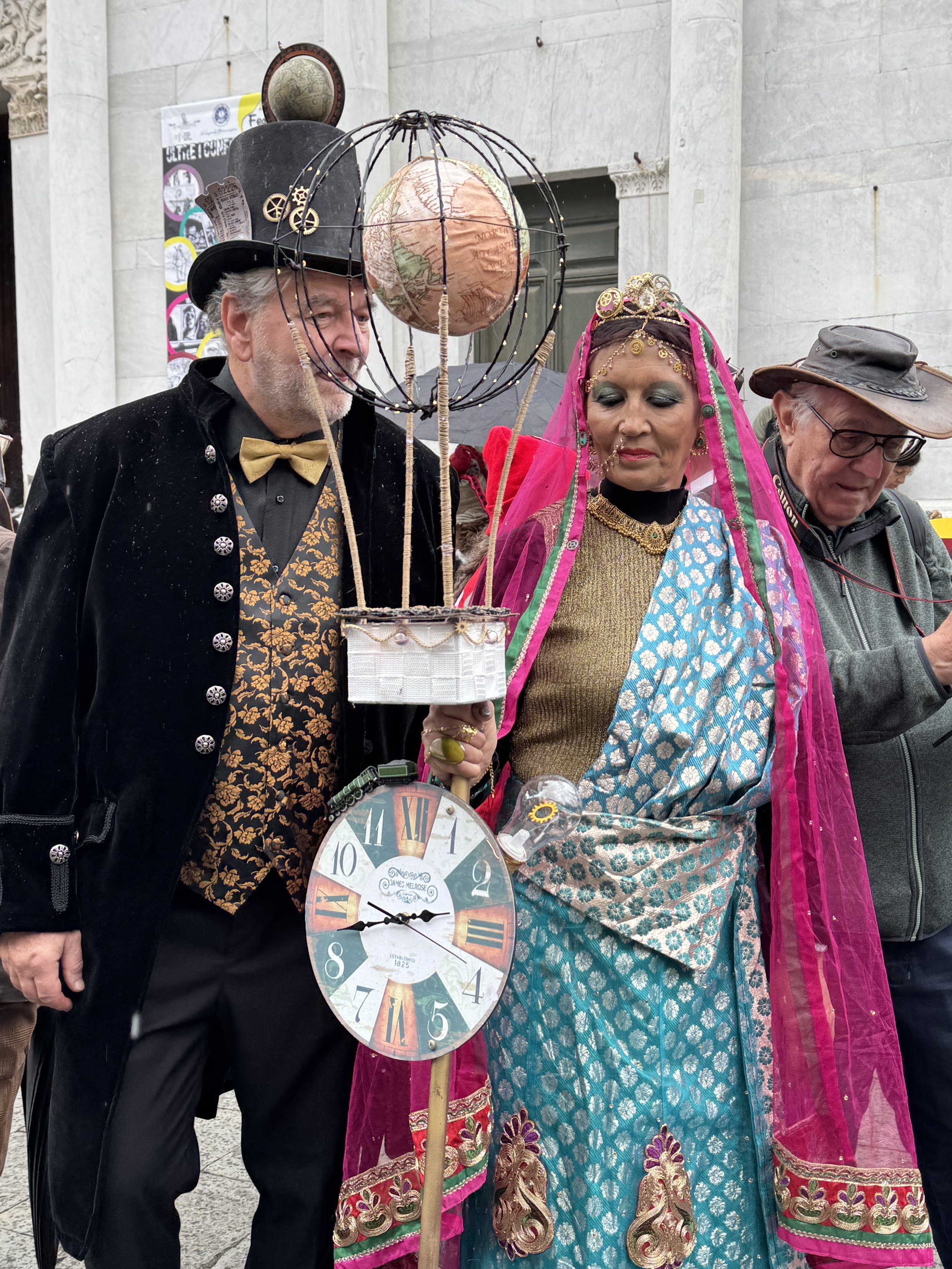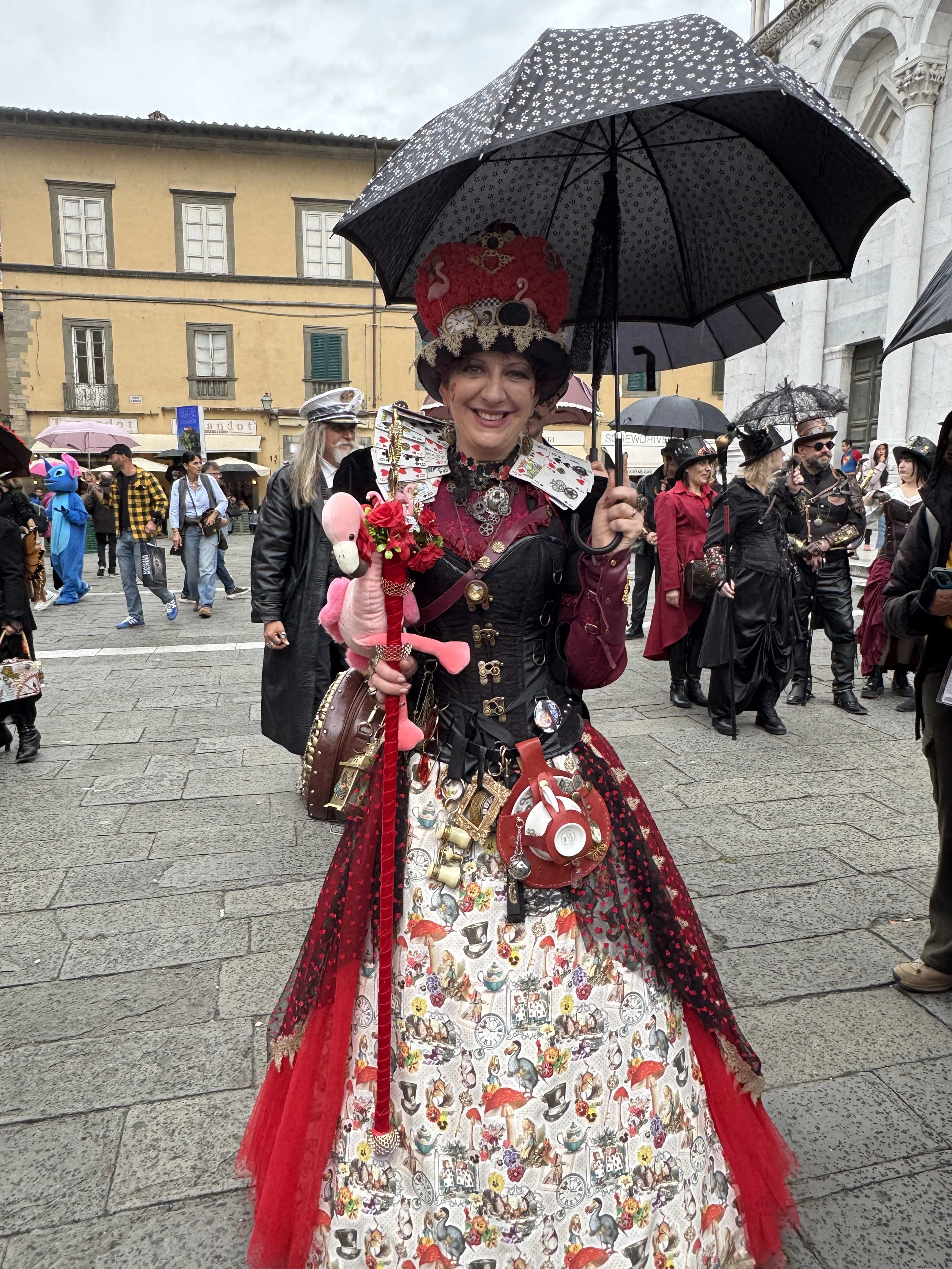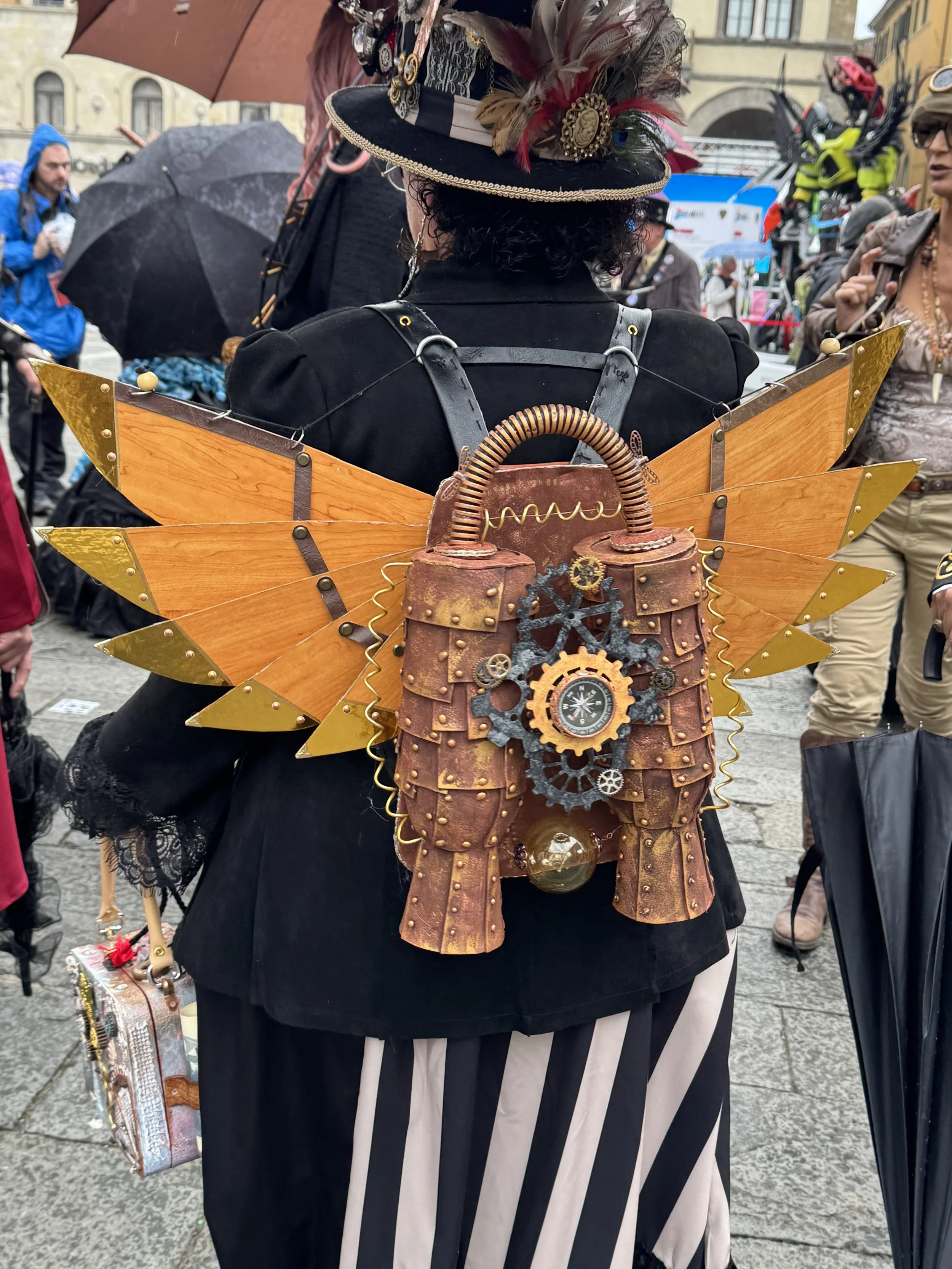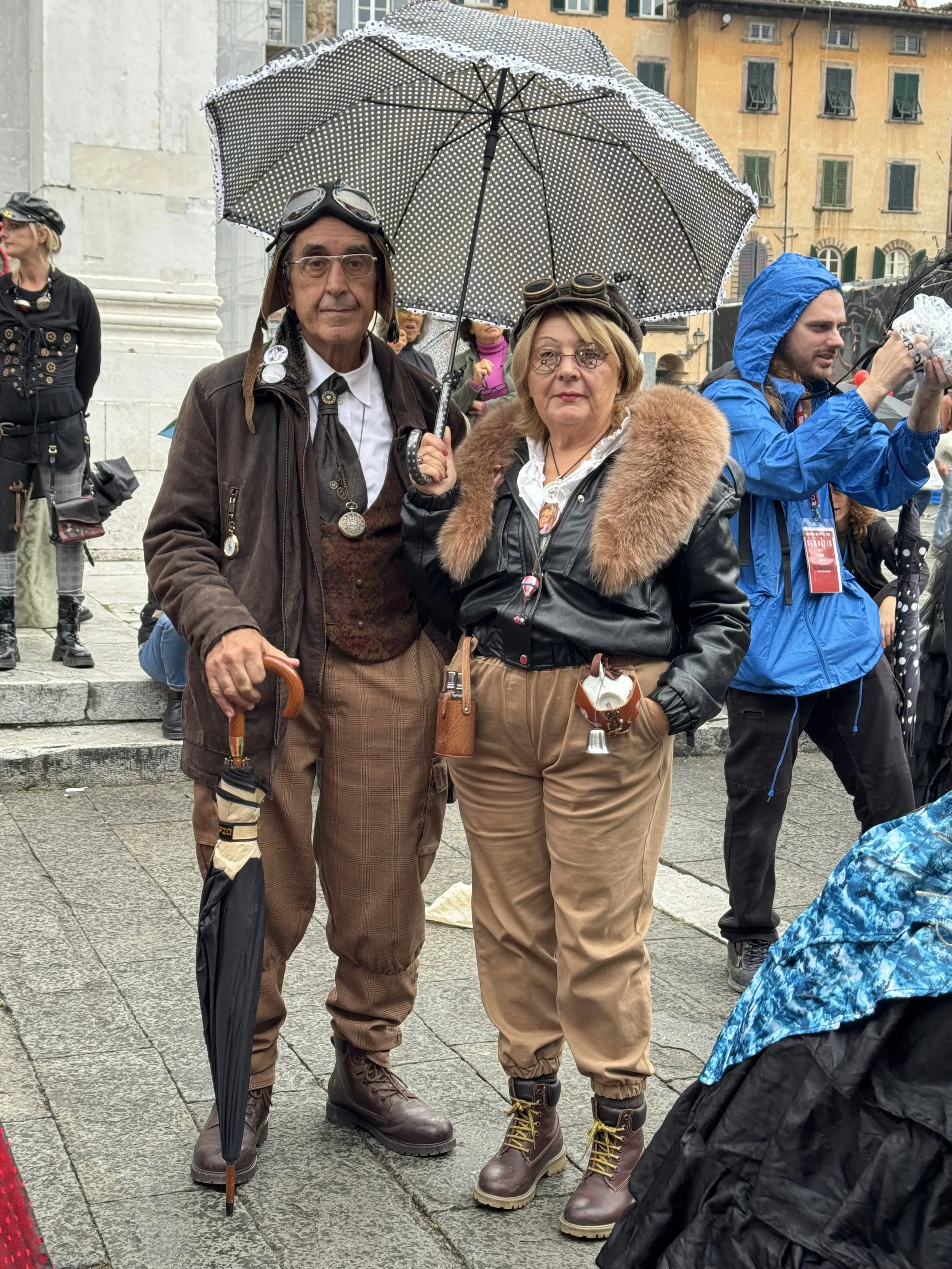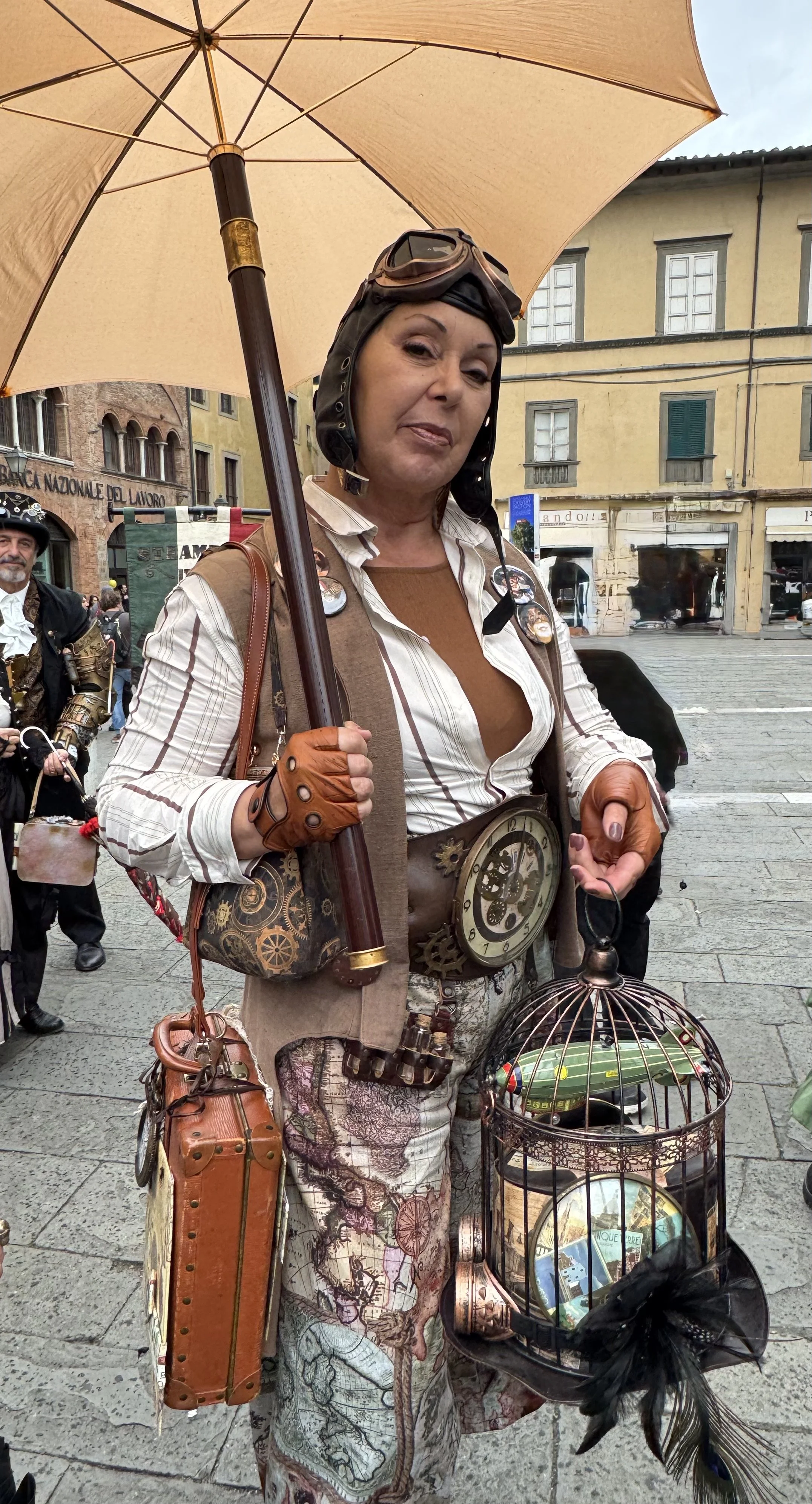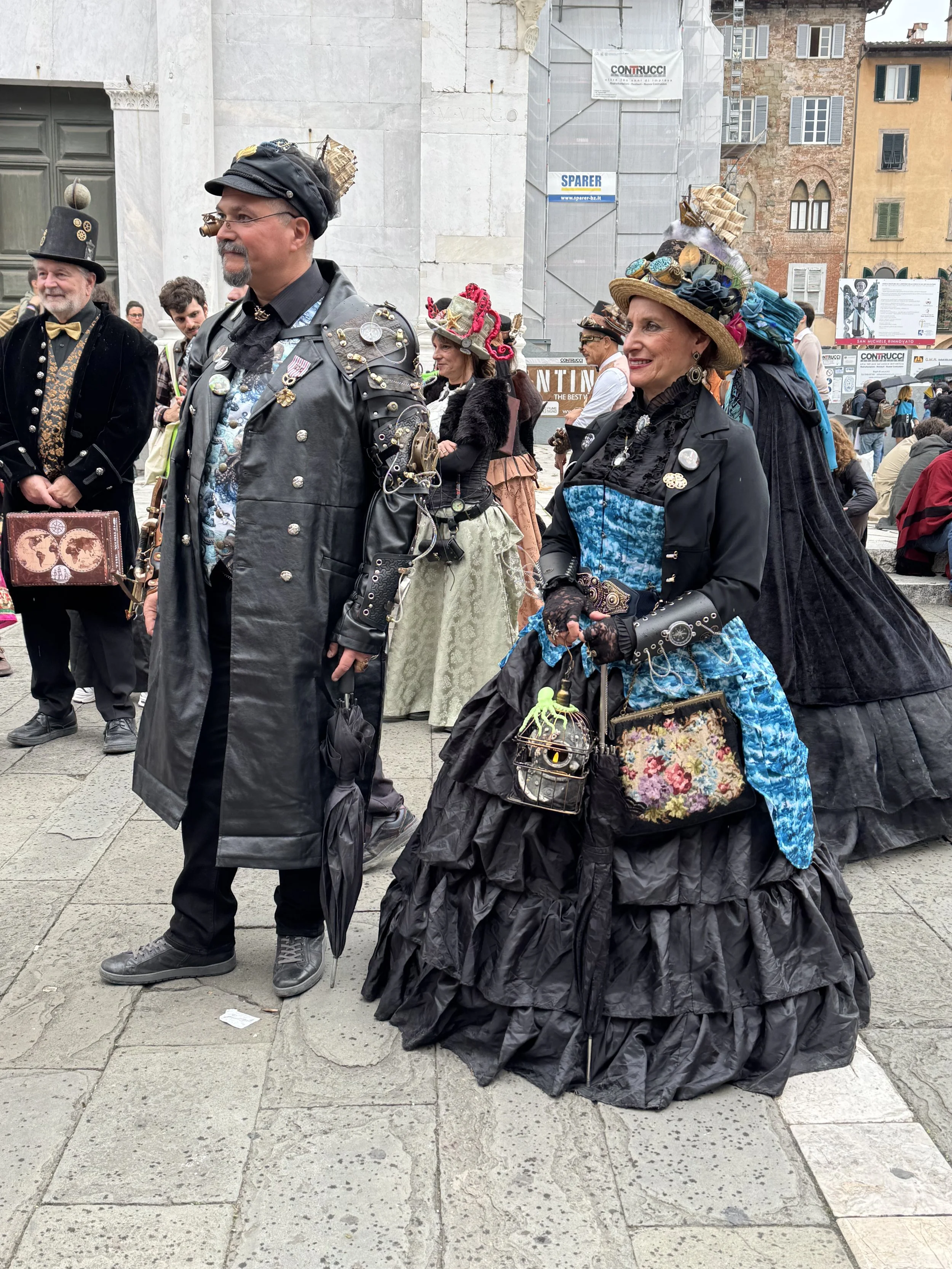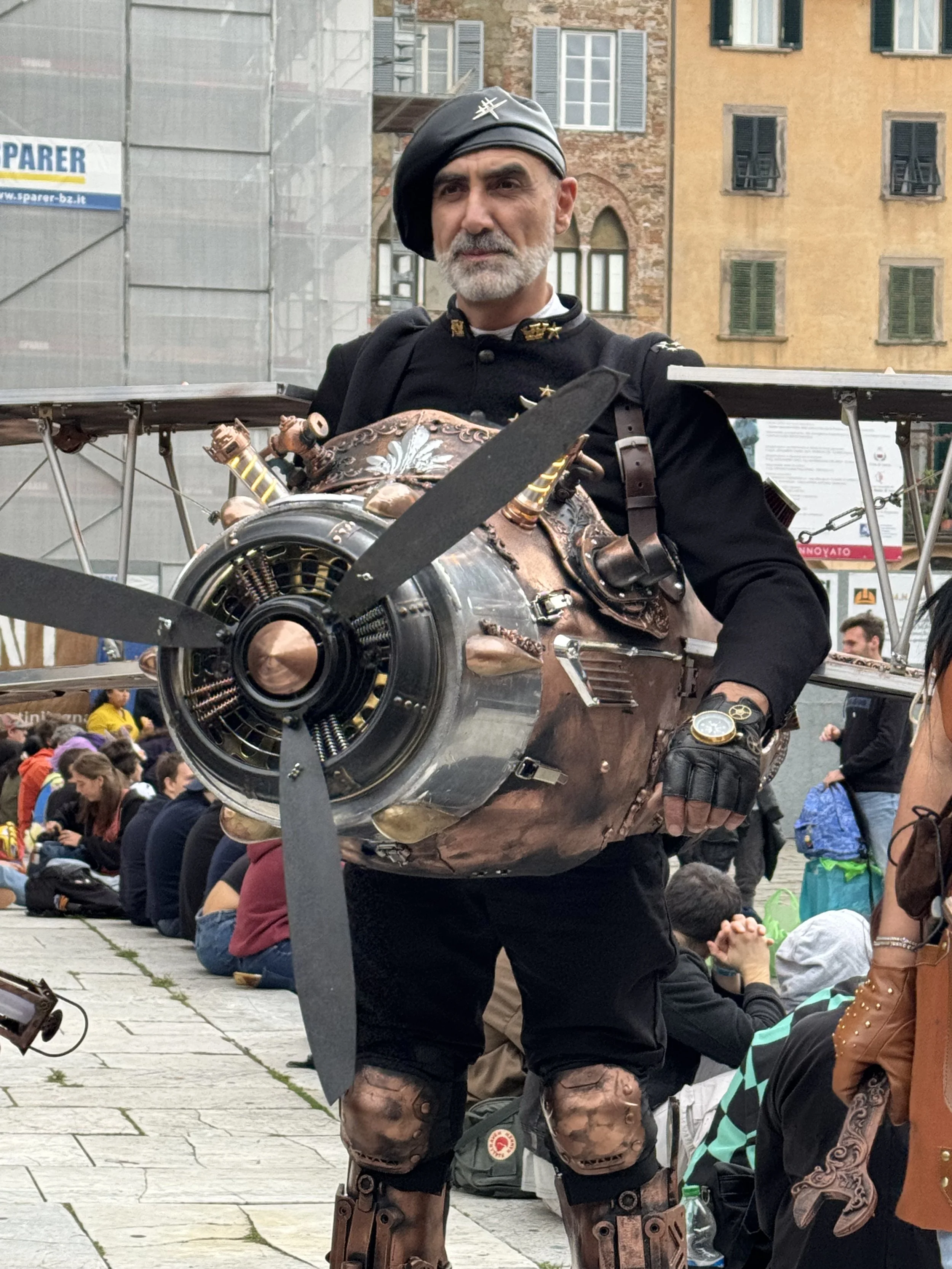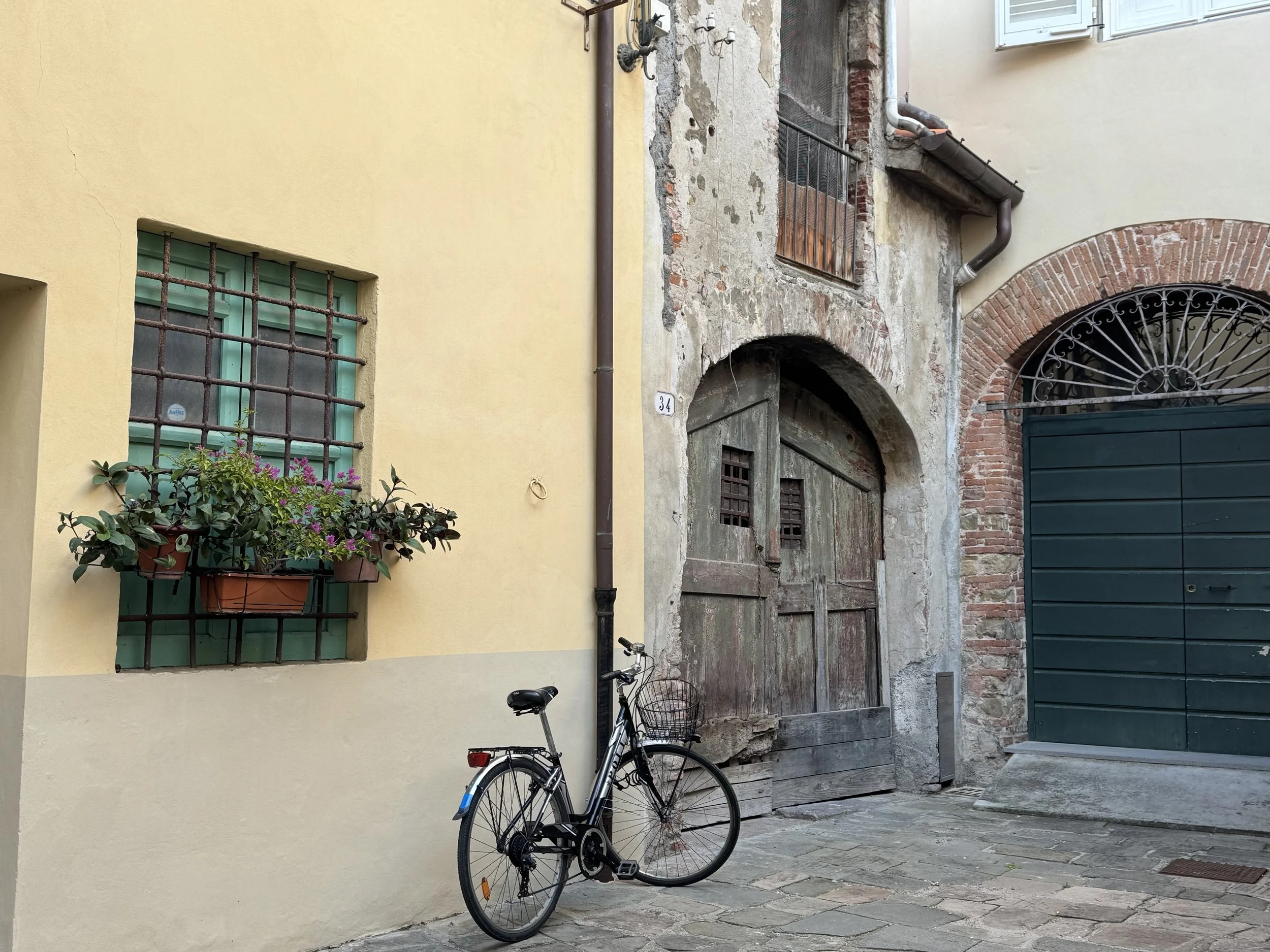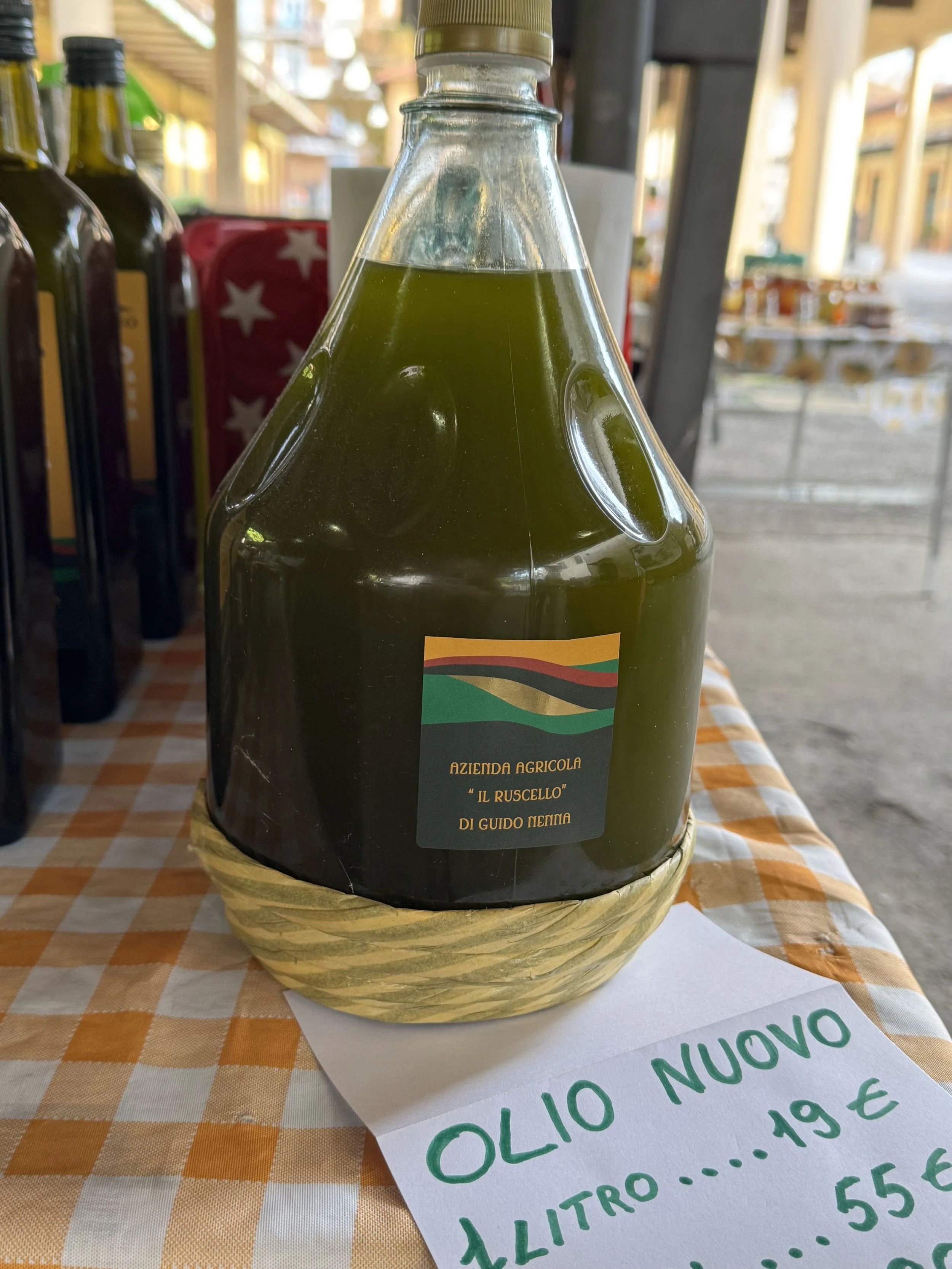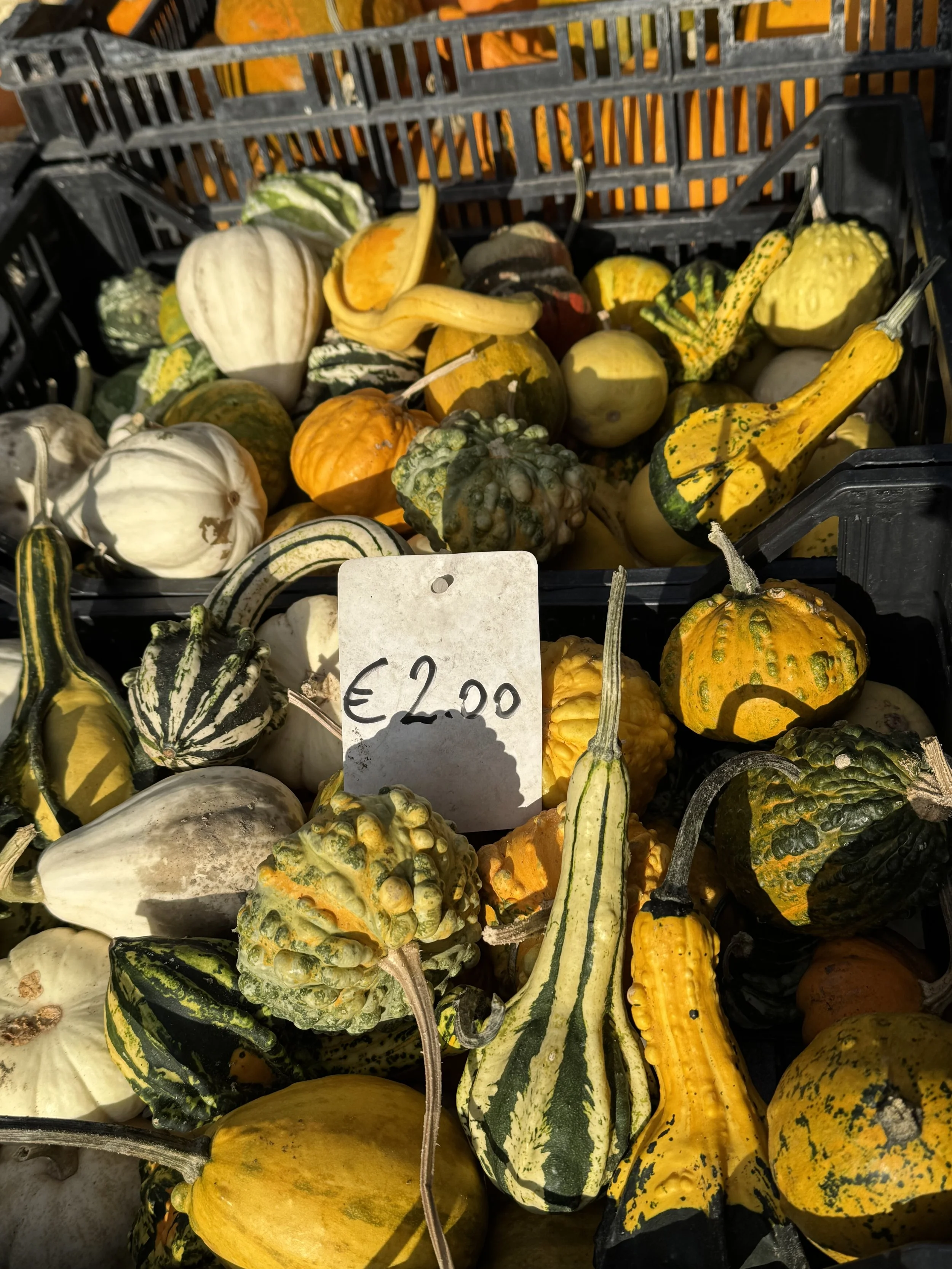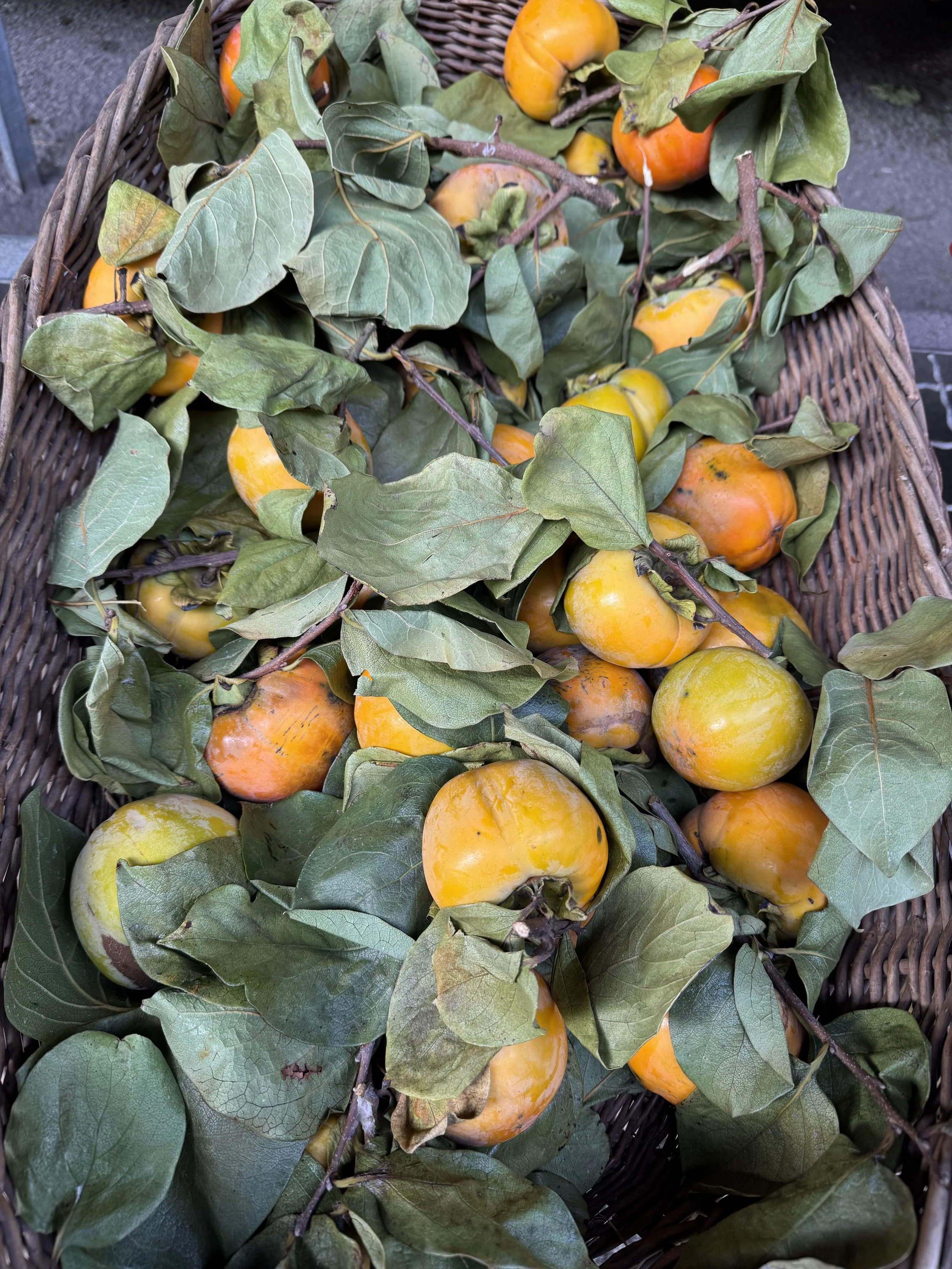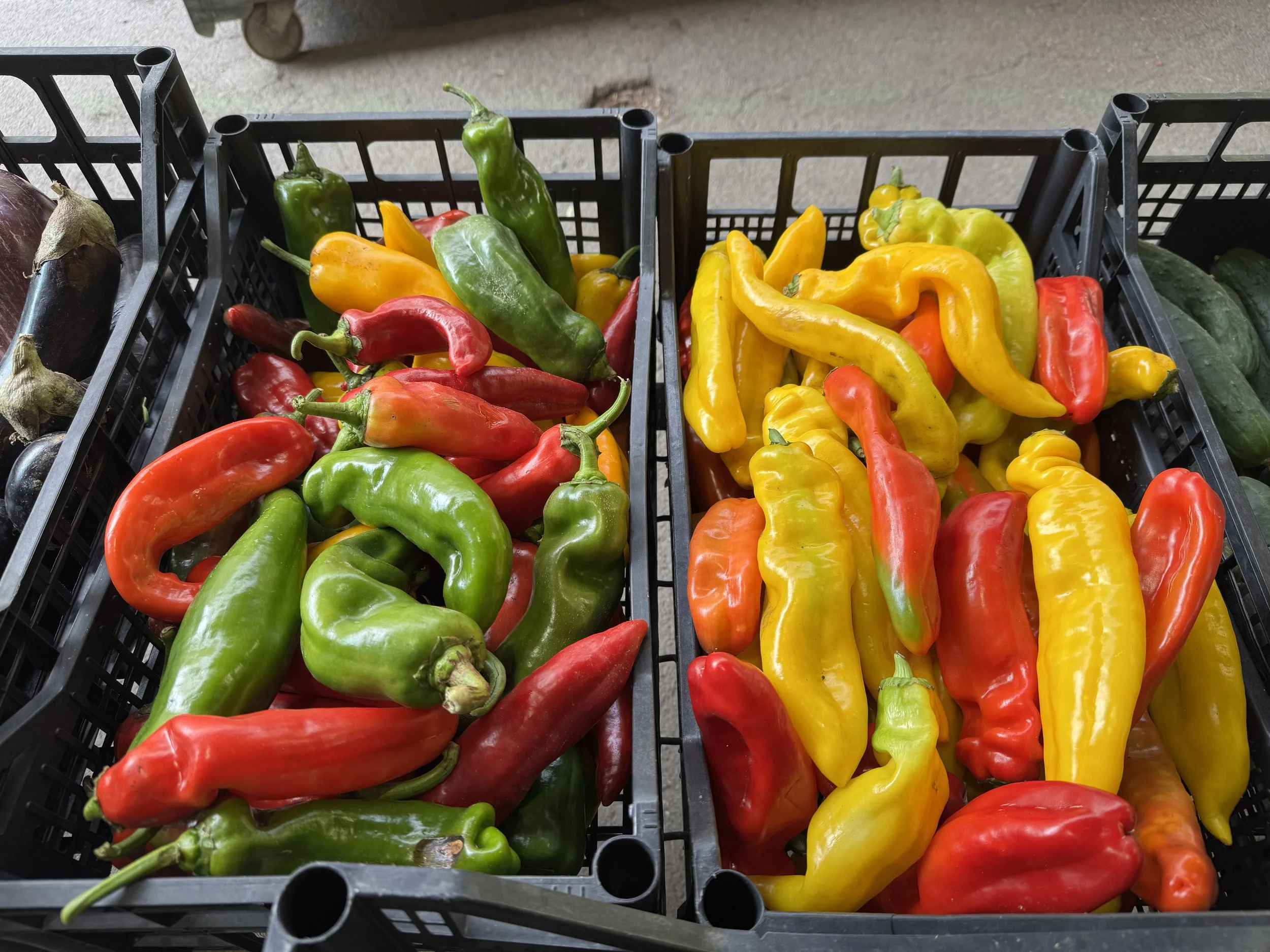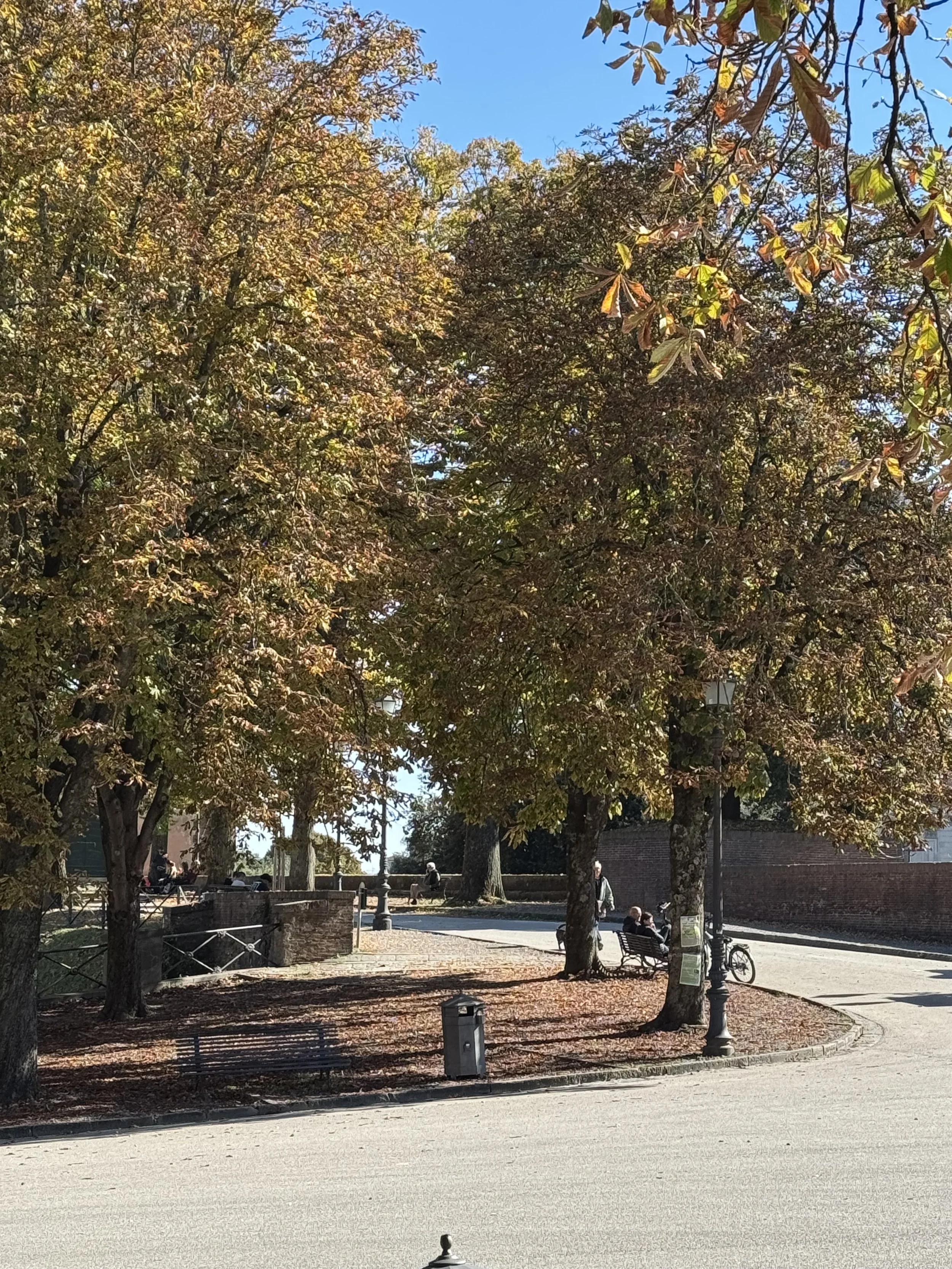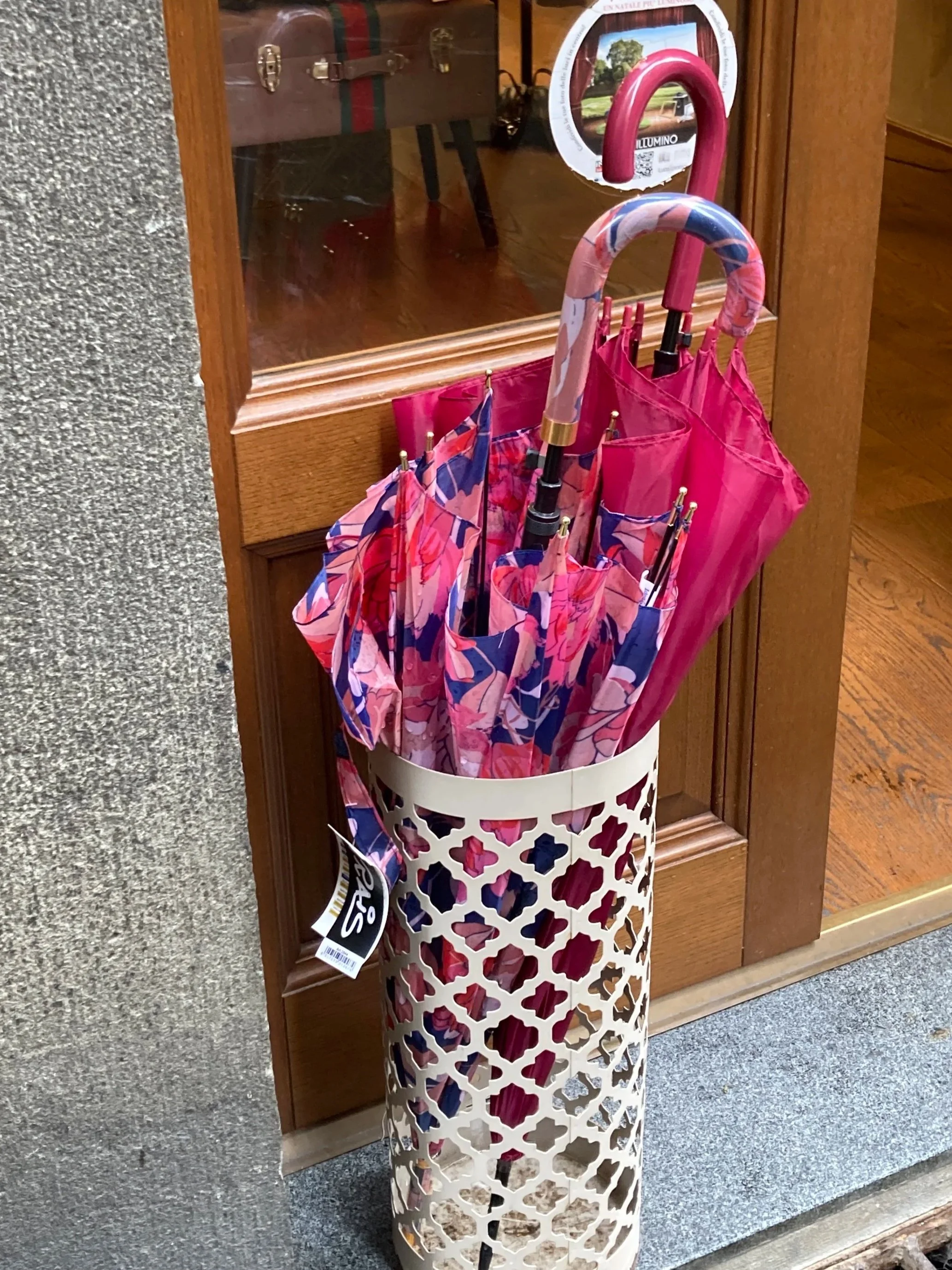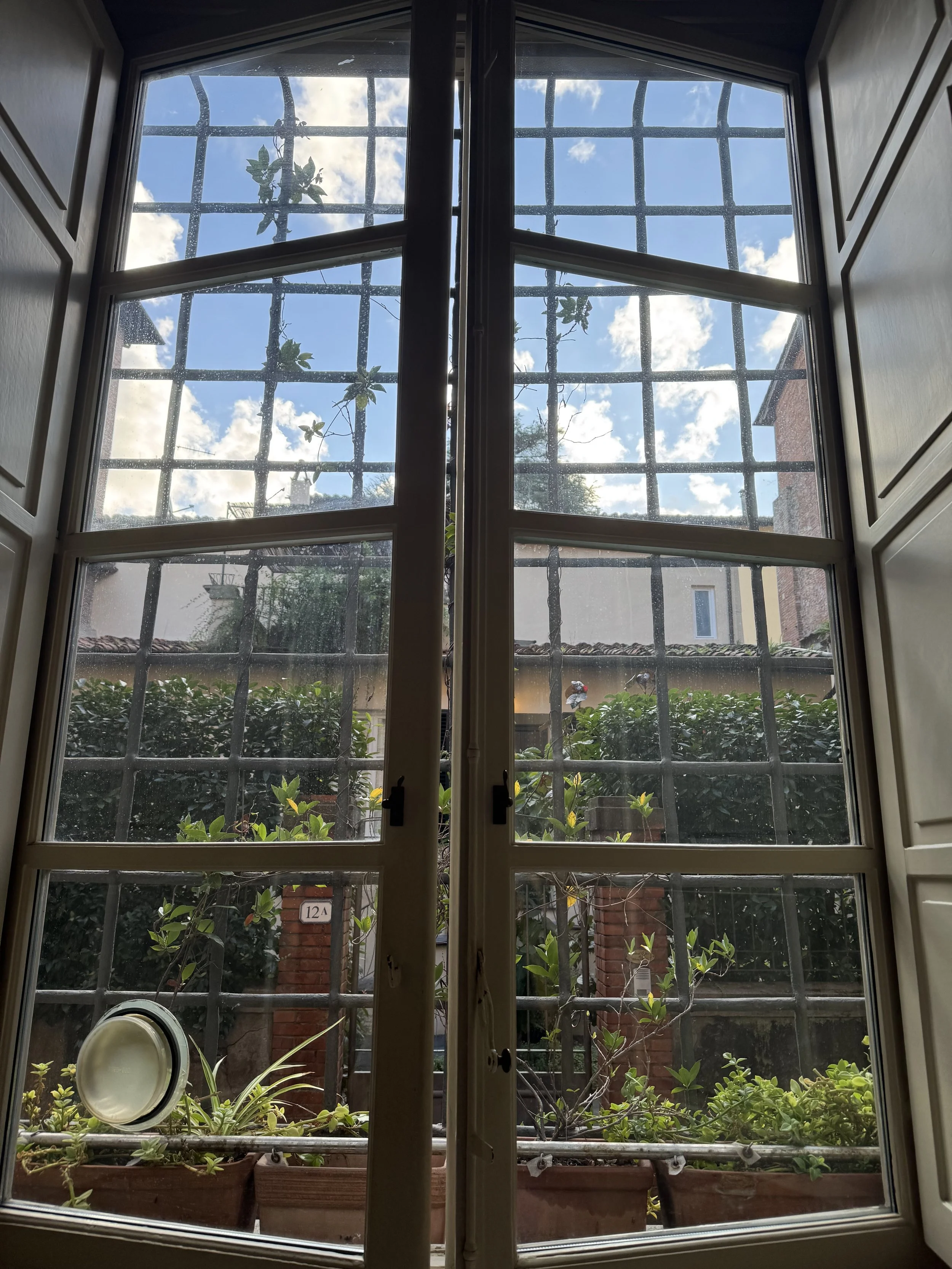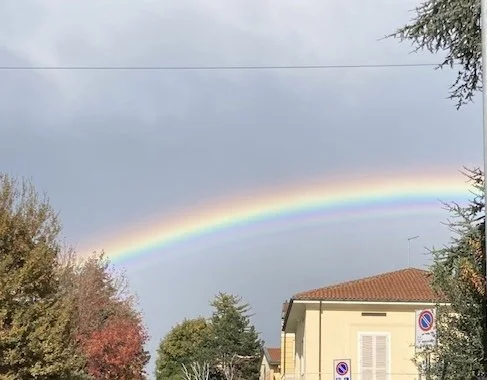The Italian Holiday Calendar
This Babbo Natale, much like Santa Claus, greets people as the enter the Caffè Santa Zita in Lucca
The holiday calendar in Italy is a little different than the one found in the United States. In the US, the holiday season begins in late November with Thanksgiving and then moves through a multicultural series of celebrations – most years Hanukkah comes first, then Winter Solstice, next is Christmas, followed by Kwanzaa, and ending with New Year’s Day. We may sing about the 12 days of Christmas, but by December 26th many Americans are back to work with only a day off coming for the New Year. The American holidays have a blend of religious, cultural, and family significance and tradition. Individuals may celebrate none of the holidays, only one, or any combination. Thanksgiving and New Year’s are US public holidays. Hanukkah, Winter Solstice, and Kwanzaa are not. But what about Christmas? It would make sense that, as a religious celebration, it would not be a public holiday in the US and yet it is – well, sort of. The required separation of the religious and civic holidays was maintained by the 1870 law that created a federal holiday on December 25th. It is in fact, by US law, not exactly a Christmas holiday at all but rather the “December 25th holiday”. No such legal gymnastics are required in Italy!
Piazza Napoleone, Lucca was one of the first places to find holiday decorations this year
Lucca’s largest Christmas tree, in piazza San Michele, arrived in late November
Here in Italy there is no Thanksgiving to mark the start of the holiday calendar. Another difference is that there seems to be much less multiculturalism in how the holidays are celebrated, at least in the smaller towns. In Lucca, I have not seen Hanukkah or Kwanzaa celebrations, and those days are not considered public holidays, though there are certainly families who celebrate them. It may be different in the bigger cities, but here the big holiday celebrations are all about Christmas.
The official start of the season is December 8th, the Feast of the Immaculate Conception. In Italy it is both a religious and a public holiday, a duality that is not at all unusual here. Traditionally, that day is when the Christmas tree goes up and the Presepe (nativity scene) appears. But much like in the US, the season unofficially begins a bit earlier.
First to appear are the decorated shop windows.. We may not have a big Macy’s display window here in Lucca, but the small shop windows are wonderfully decked out. Walking through town to see the Christmas windows is one of my favorite holiday activities.
By the 4th week of November Lucca’s streets are hung with tiny white lights and overhead decorations. Larger holiday installations appear throughout the city and displays of stars, snowflakes, or other symbols of the season are projected onto the sides of the city’s medieval buildings.
Other holiday events in late November / early December in Lucca include the opening of a temporary ice-skating rink, the start of the Christmas market in Piazza Napoleone (this year’s market features French products), and the lighting of the big Christmas tree in Piazza San Michele.
A big crowd turned out for the tree lighting ceremony
Throughout December the seasonal magic continues with concerts and street music, processions, Presepe, special markets, children’s activities including the Casa di Babbo Natale (Father Christmas’s house), and all the lights and sparkle that one little Italian Medieval town can muster. Add in the various social events with friends and the whole month will be filled with activities. We’ll rest in January!
It all comes to an end on January 5th and 6th with the celebration of La Befana, the Christmas witch. On the evening of the 5th, Befana (perhaps several of them) will wander the historic center of Lucca. On the 6th, Befana arrives for the children in Piazza San Francesco. Descending from a roof top (with the help of a crane and the fire department), she brings stockings full of candy to the children. It is always fun to watch her arrival, surrounded by some very excited children. My own Befana keeps watch in my apartment throughout the season.
It’s December – let the holiday magic begin wherever and however you choose to celebrate the season.

